Forums
- Forums
- Axis And Allies Forum
- General Discussion
- Aviation News
Aviation News
Post a reply
- Go to Next topic
- Go to Welcome
- Go to Introduce Yourself
- Go to General Discussion
- Go to Screenshots, Images and Videos
- Go to Off topic
- Go to Works in Progress
- Go to Skinning Tips / Tutorials
- Go to Skin Requests
- Go to IJAAF Library
- Go to Luftwaffe Library
- Go to RAF Library
- Go to USAAF / USN Library
- Go to Misc Library
- Go to The Ops Room
- Go to Made in Germany
- Go to Campaigns and Missions
- Go to Works in Progress
- Go to Juri's Air-Raid Shelter
- Go to Campaigns and Missions
- Go to Works in Progress
- Go to Skinpacks
- Go to External Projects Discussion
- Go to Books & Resources
-
 Main AdminPLA's H-6 Intercept by JASDF F-15s
Main AdminPLA's H-6 Intercept by JASDF F-15s
CAPE CANAVERAL AIR FORCE STATION, Fla., Dec. 18, 2016 /PRNewswire/ -- Lockheed Martin (NYSE:LMT) Commercial Launch Services has successfully launched the EchoStar XIX communications satellite. An Atlas V 431 blasted off at 2:13 p.m. EST from Space Launch Complex 41, placing EchoStar XIX in orbit for customer Hughes Network Systems, LLC (HUGHES), an EchoStar company, and marking the 139th consecutive successful Atlas launch to date.
[Lockheed Martin Commercial Launch Services launches EchoStar XIX aboard an Atlas V 431 rocket. The satellite will provide HughesNet Gen5 high-speed satellite Internet service to rural areas across North America. Photo courtesy of Lockheed Martin and United Launch Alliance.]
"The mighty Atlas has marked yet another successful launch as it placed EchoStar XIX into orbit," said Steve Skladanek, president of Lockheed Martin Commercial Launch Services. "This reliable rocket continues to bring unparalleled precision and schedule assurance to every mission it carries."
The rocket, a United Launch Alliance (ULA) Atlas V 431, was provided by Lockheed Martin Commercial Launch Services. For commercial missions, Lockheed Martin is responsible for contracts, licensing, marketing, sales and mission management of Atlas.
With an average slip date of less than two weeks and successful track record, the Atlas family of rockets provides the most reliable lift in the commercial market. Atlas also offers such precise delivery into orbit that customers can use the excess fuel to extend the life of a satellite and bringing more value to the mission.
EchoStar XIX will enable HughesNet Gen5, the next generation of HughesNet satellite Internet service, delivering more speed, more data, and more advanced features for U.S. consumers and small businesses coast to coast who are unserved or underserved by terrestrial broadband Internet services.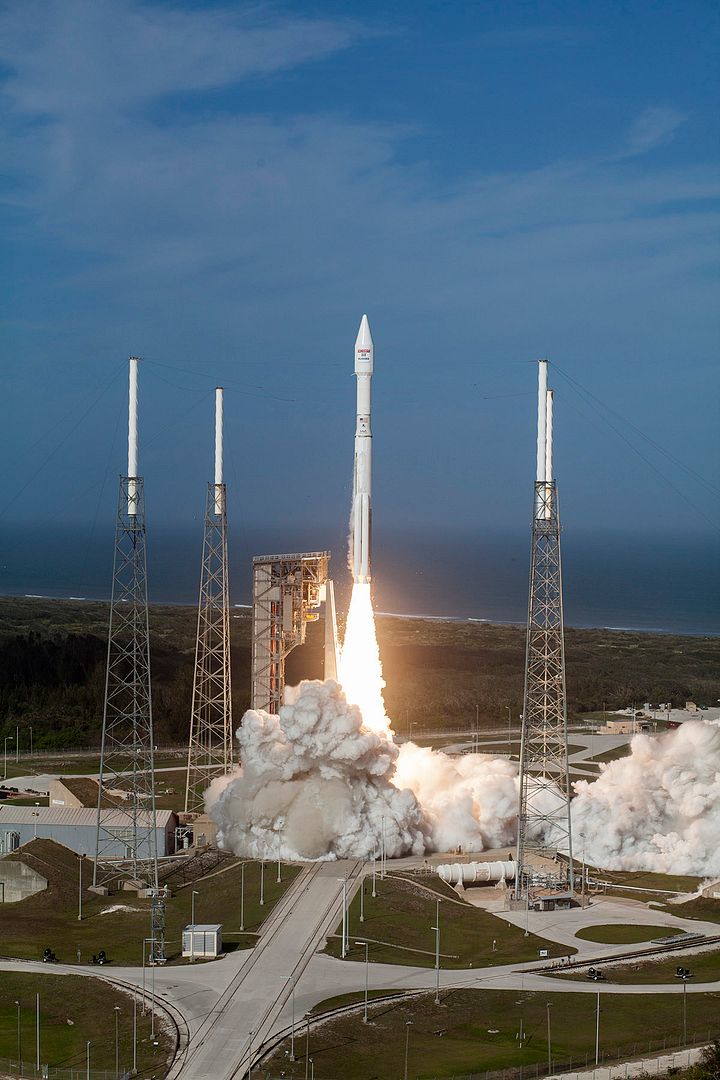
-
 Main AdminTYNDALL AIR FORCE BASE, Fla. --
Main AdminTYNDALL AIR FORCE BASE, Fla. --
At Checkered Flag 17-1, legacy and fifth-generation fighter jet integration creates aggressive and advanced training opportunities. But another integration is happening just below the surface, ensuring multiple Air Force components, receive the same vital learning opportunities.
Active-duty, Air Force Reserve and Air National Guard Airmen from around the country are working together through Total Force Integration at Checkered Flag. They are preparing to rapidly respond to any current, real-world conflict, while training for the future of air dominance.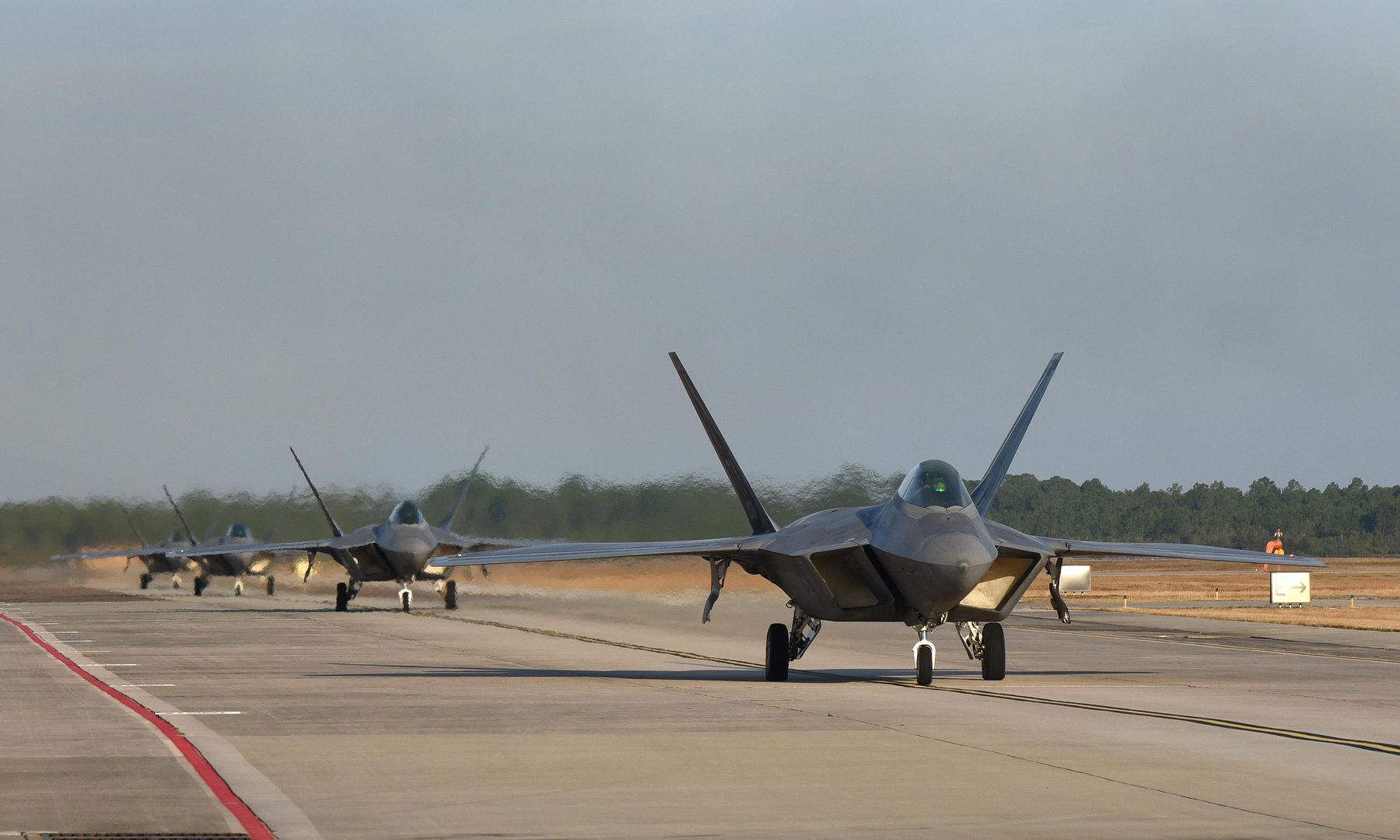
?The Air Force Reserve and the Air National Guard components bring the same capabilities to Checkered Flag that they do to the entire Air Force each and every day,? said Col. Randy Cason, 44th Fighter Group commander and Checkered Flag 17-1 Air Expeditionary Wing commander. ?They bring experience, continuity, and a high degree of technical and tactical expertise.?
During the exercise, numerous pilots and about 25 percent of Tyndall?s maintenance team are reservists, bringing their knowledge, experience and proficiency to the fight.
?A lot of times these Airmen don?t even know whether someone working around them is a reservist or active duty. We are all just in the fight together,? said Capt. Matthew Goldey, 44th Fighter Group maintenance operations officer and Checkered Flag 17-1 Air Expeditionary Maintenance Group commander. ?We are all one team.?
With budgetary restraints being an ever-present Air Force concern, Total Force Integration ensures that U.S. airpower is not diminished while being fiscally mindful.
?Total Force Integration is an existential requirement for the Air Force while in constrained budgetary environments,? Cason said. ?We have a lot to do, but we also must be good stewards of the U.S. taxpayer?s money. [This strategy] allows us to ensure mission success at a reduced cost.?
Day-to-day operations and large-scale exercises like Checkered Flag ensure all components of the Air Force are ready for the fight.
?The Air Force benefits from everyone being capable of accomplishing the mission,? Cason said. ?Reserve and Guard members being able to participate with the active-duty Air Force members means that we are all trained to the same standard, equally capable, performing the same mission and able to integrate and operate as a team.?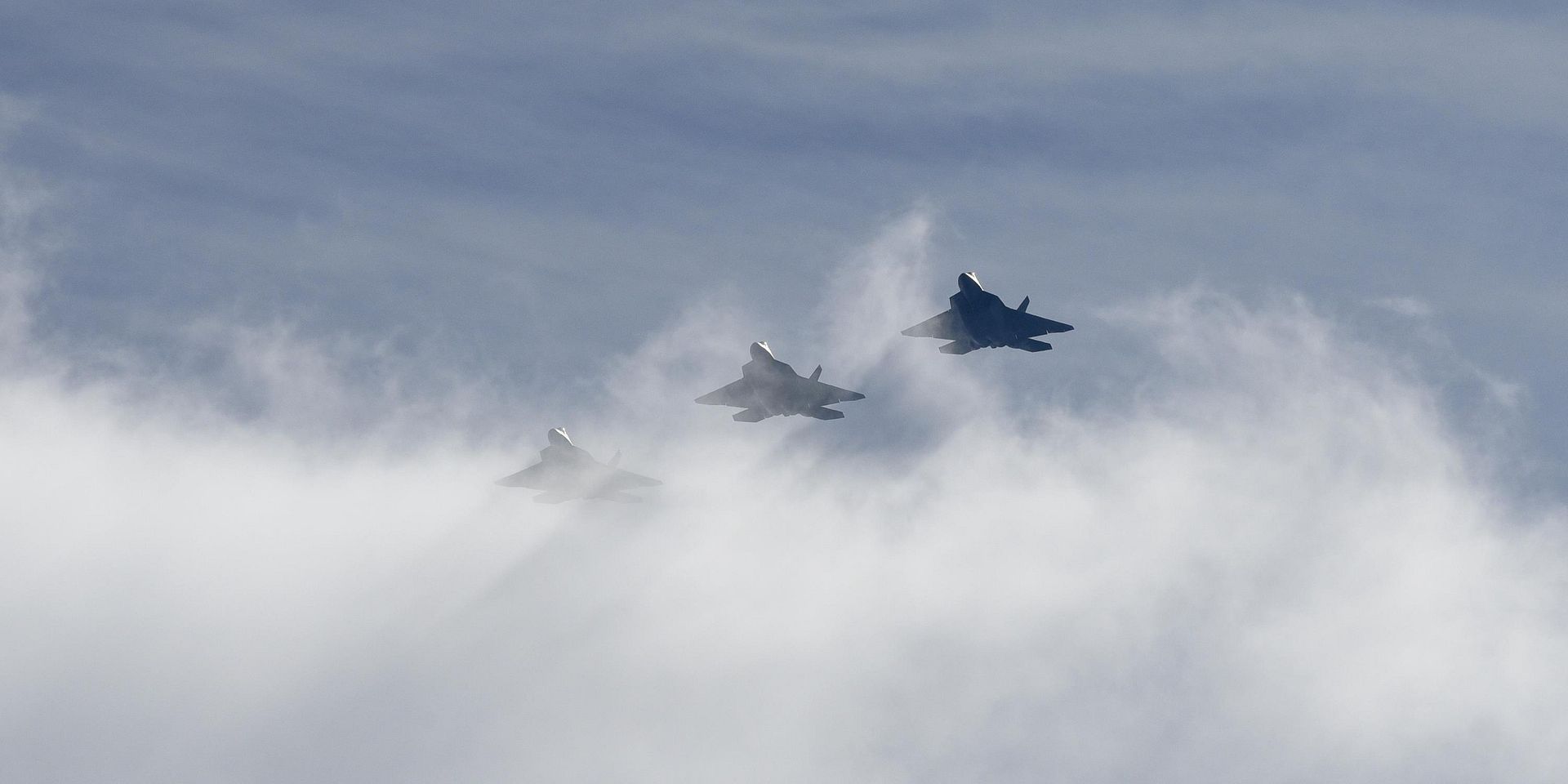
December 17, 2016
Gulfstream Aerospace Corp. today announced the Gulfstream G600 has completed its first flight, officially kicking off the aircraft?s flight-test program. Two additional G600 test aircraft have been inducted into the flight-test center in anticipation of their flights early next year.
?Launching the G600?s flight-test program is a milestone for us and our customers, who have guided the vision for this aircraft from the beginning,? said Mark Burns, president, Gulfstream. ?We look forward to delivering this aircraft to them in 2018. Today?s flight, which went flawlessly, represents a significant step forward in the journey to certification and delivery.?
The G600 departed Savannah-Hilton Head International Airport at 1:50 p.m. Dec. 17 and spent 2 hours and 53 minutes in the air. The aircraft was piloted by Gulfstream experimental test pilots Scott Martin and Todd Abler, with Flight Test engineer Nathaniel Rutland providing on-board support.
?This flight went exactly as anticipated, thanks in large part to the investments we have made in our ground-based laboratories,? Burns said. ?This flight is the perfect way to wrap up 2016 and set the tone for a successful 2017.?
The G600 has been designed with input from customers to ensure an unparalleled passenger experience. It has the longest cabin in its class, satellite communications and high-speed internet and can accommodate up to four living areas to create distinct yet flexible spaces for work, entertainment, dining and rest. Fourteen panoramic windows ? the largest in the industry ? a low cabin altitude and 100 percent fresh air contribute to the superior cabin environment, helping passengers feel refreshed and rested upon arrival.
The G600 can travel 6,200 nautical miles/11,482 kilometers at Mach 0.85 and 4,800 nm/8,890 km at Mach 0.90, and its maximum operating speed is Mach 0.925, the same maximum speed as the flagship Gulfstream G650ER.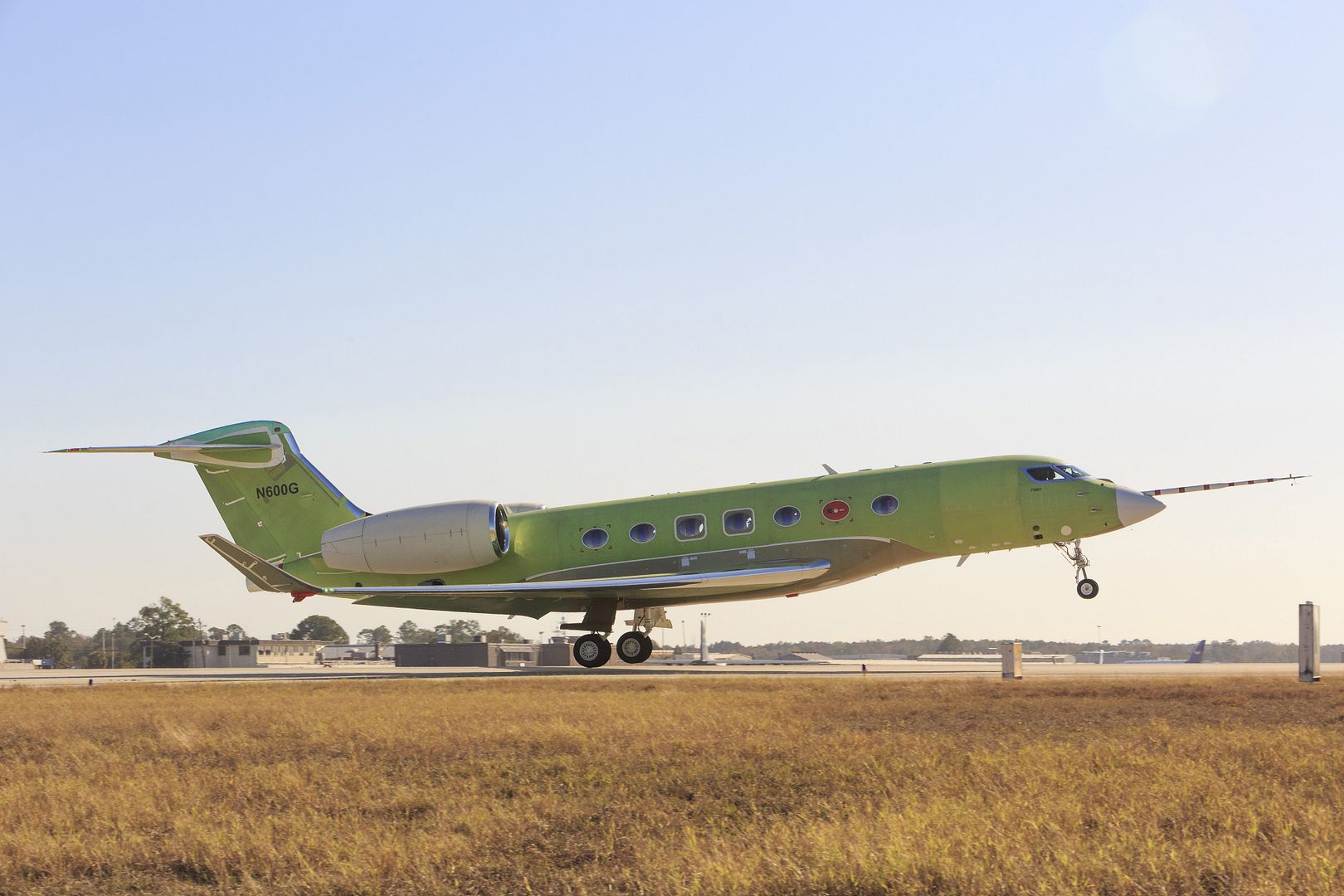
20 December 2016 Press Release
Atlantic Airways, the national carrier of the Faroe Islands, has taken delivery of its first Airbus A320 as part of its plan to increase capacity, becoming Airbus? newest operator of the type.
Atlantic Airways passengers will benefit from the newest cabin comfort throughout the cabin in a single class layout with 168 seats and 18 inch wide seats as standard. The aircraft which is equipped with CFM engines will be deployed on routes from the Faroe Islands to Copenhagen.
The A320 was chosen by Atlantic Airways for its unrivalled economics, performance and operability in challenging environmental and geographical conditions. The aircraft has Required Navigation Performance (RNP 0.1) capability built-in, which enables the aircraft to fly precisely along predefined routes using state-of-the-art on-board navigation systems. Atlantic Airways were the first airline in Europe to use the Required Navigation Performance approach.
The A320 Family is the world?s best-selling single aisle product line with over 12,800 orders since launch and more than 7,300 aircraft delivered to some 400 operators worldwide. Thanks to their widest cabin, all members of the A320 Family offer unmatched comfort in all classes and Airbus? 18? wide seats in economy as standard. With one aircraft in four sizes (A318, A319, A320 & A321), the A320 Family, seating from 100 to 240 passengers, seamlessly covers the entire single-aisle segment from low to high-density domestic to longer range routes.
-
 Main AdminATLANTIC OCEAN (Dec. 19, 2016) An AV-8B Harrier from the 22nd Marine Expeditionary Unit (MEU) launches off the flight deck of the amphibious assault ship USS Wasp (LHD 1). Wasp is deployed as part of the Wasp Amphibious Ready Group, which is offloading the 22nd MEU after completing a six-month deployment to the U.S. 5th and 6th Fleet areas of operations. (U.S. Navy photo by Seaman Levingston Lewis/Released)
Main AdminATLANTIC OCEAN (Dec. 19, 2016) An AV-8B Harrier from the 22nd Marine Expeditionary Unit (MEU) launches off the flight deck of the amphibious assault ship USS Wasp (LHD 1). Wasp is deployed as part of the Wasp Amphibious Ready Group, which is offloading the 22nd MEU after completing a six-month deployment to the U.S. 5th and 6th Fleet areas of operations. (U.S. Navy photo by Seaman Levingston Lewis/Released)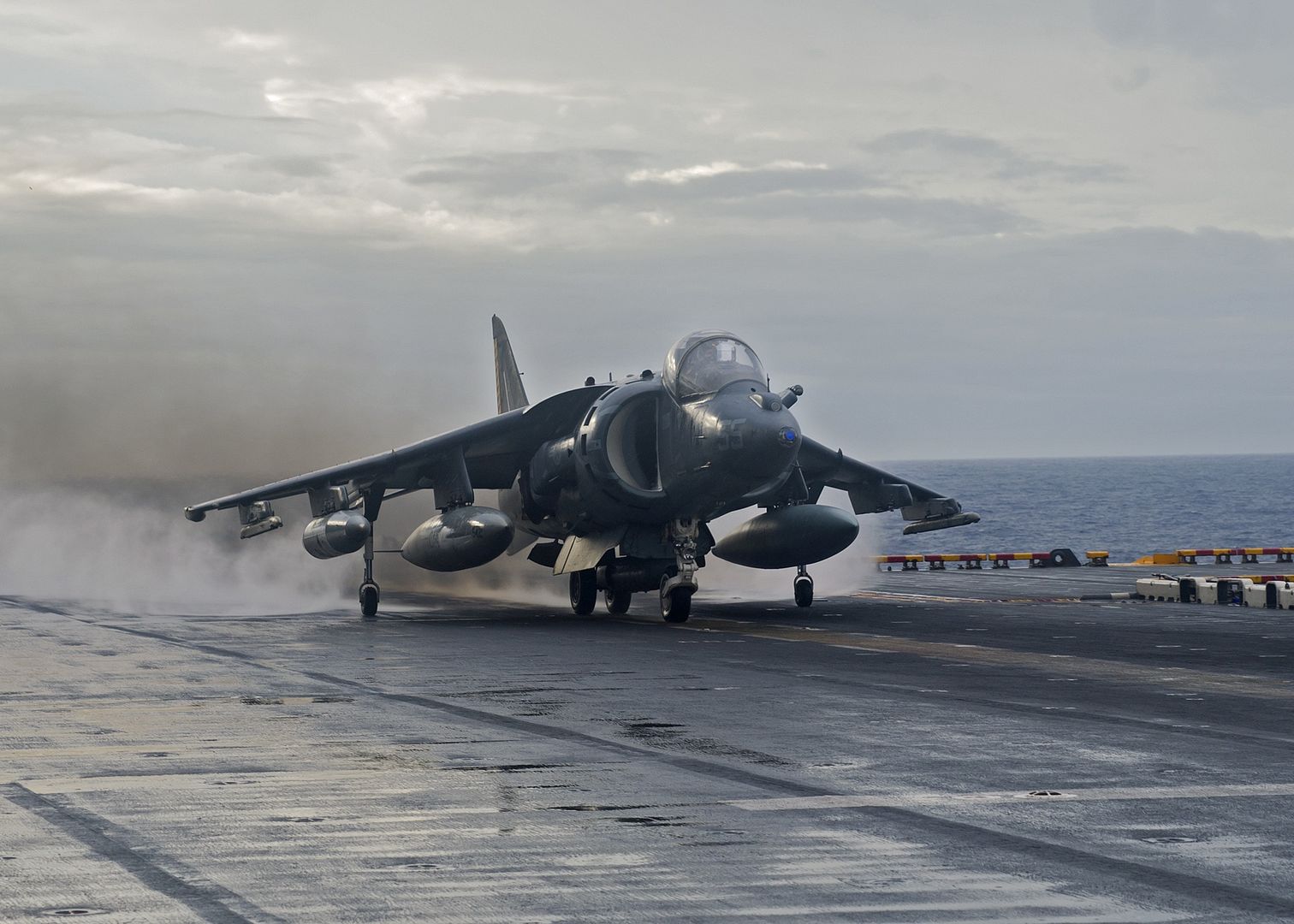
FALLON, Nev.(December 16, 2016) An F-35C Lightning II, attached to the Grim Reapers of Strike Fighter Squadron (VFA) 41, taxis about Naval Air Station Fallon. (U.S. Navy photo by Petty Officer 1st Class Joseph R. Vincent/Released)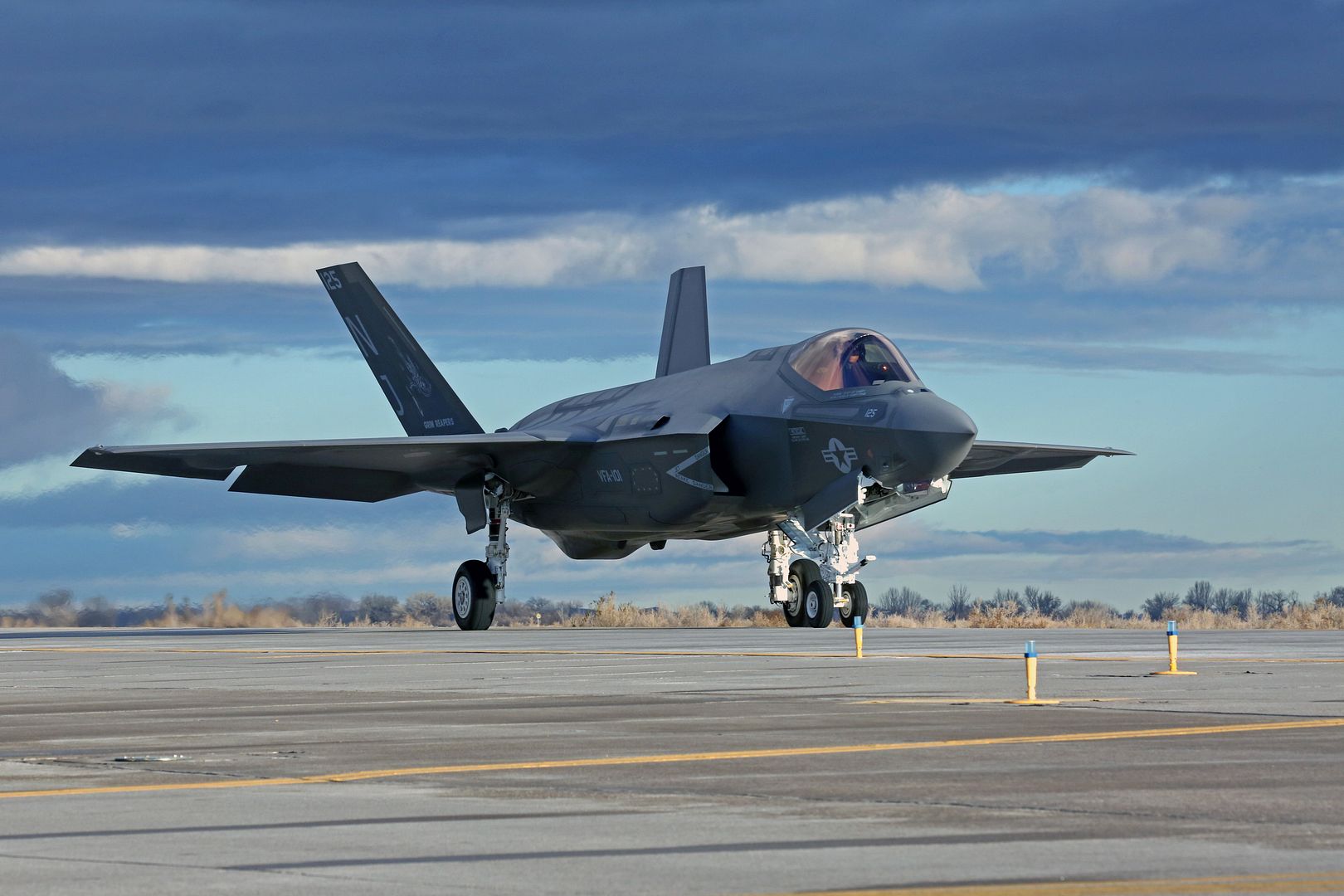
FALLON, Nev.(December 16, 2016) An F/A-18F Super Hornet, attached to the Mighty Shrikes of Strike Fighter Squadron (VFA) 94, taxis aboard Naval Air Station Fallon. (U.S. Navy photo by Petty Officer 1st Class Joseph R. Vincent/Released)
FALLON, Nev.(December 16, 2016) An F/A-18A+ Hornet, attached to the River Rattlers of Strike Fighter Squadron (VFA) 204, taxis aboard Naval Air Station Fallon. (U.S. Navy photo by Petty Officer 1st Class Joseph R. Vincent/Released)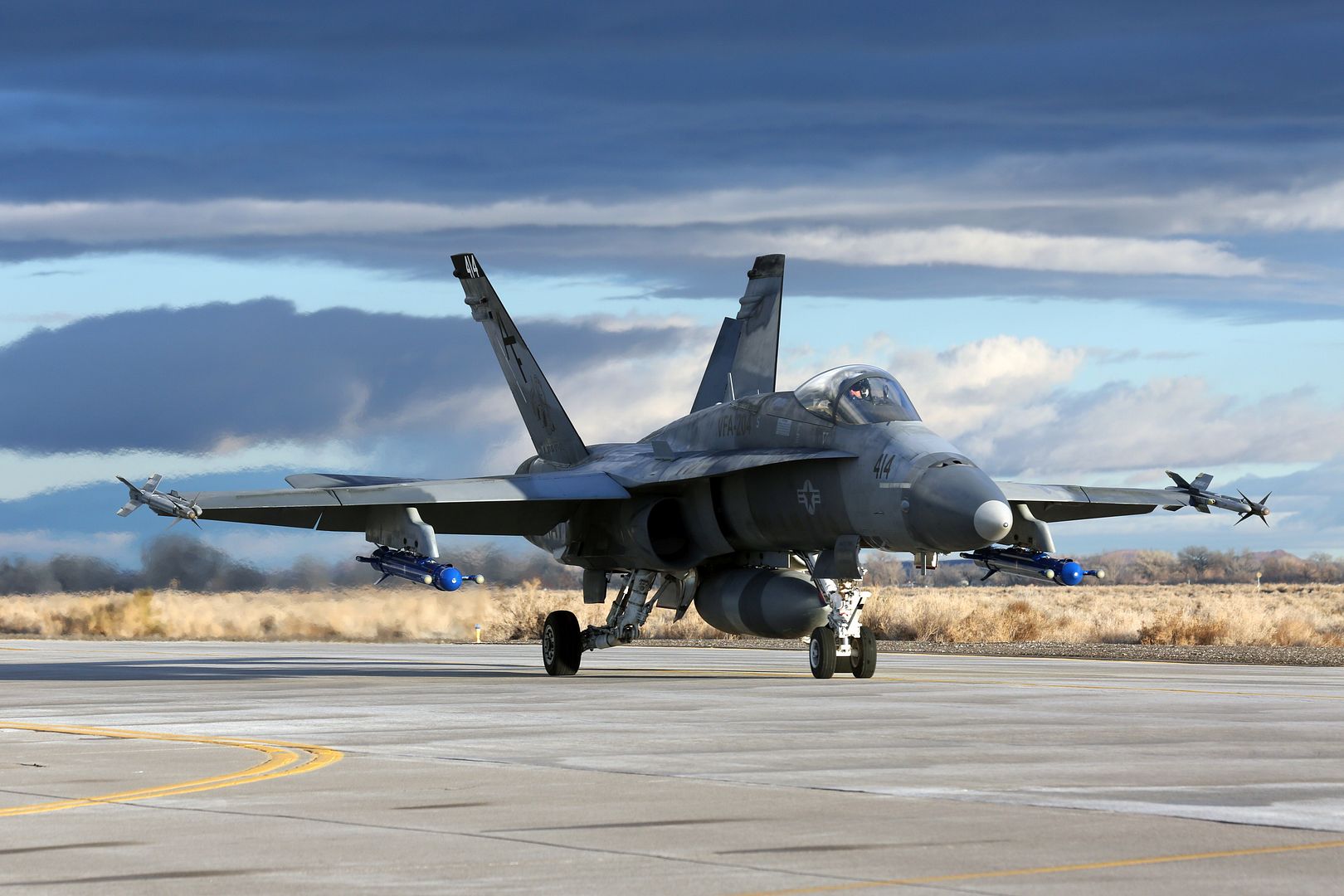
A C-5 Galaxy from Dover Air Force Base, Delaware, waits for a very special cargo on the flightline of Edwards Air Force Base, California, Dec. 19. The C-5 was loaded with the majority of a disassembled C-119B ?Flying Boxcar? for transportation to the Air Mobility Command Museum at Dover AFB. This airplane, tail number 48-0352, was one of several that played a direct role in the Battle of Chosin Reservoir in the Korean War in 1950. The aircraft will eventually be restored to its Korean War era configuration and displayed at the AMC Museum. (U.S. Air Force photo by Christopher Ball)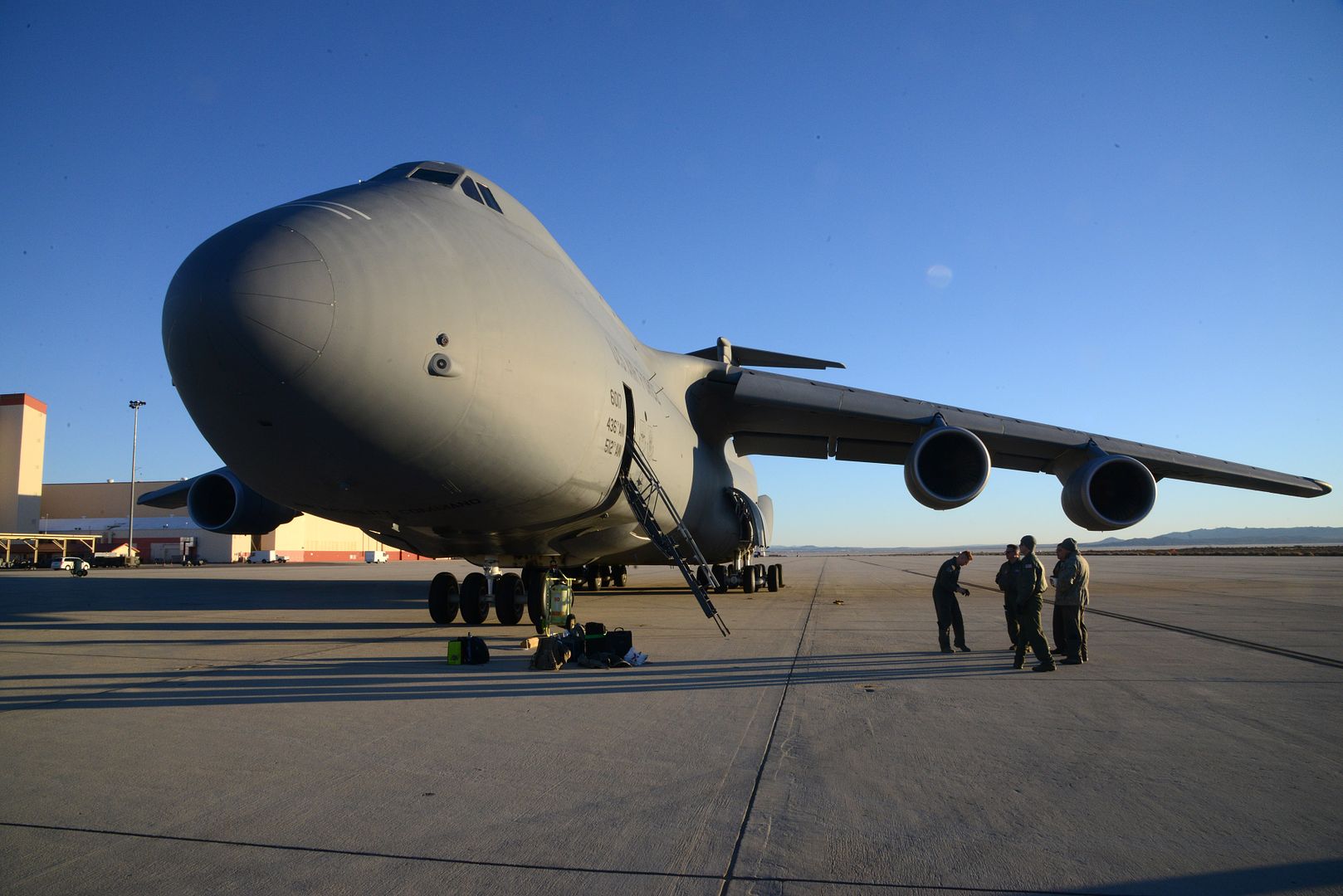
ST. LOUIS, Dec. 20, 2016 ? Boeing [NYSE: BA] and partner Saab [Stockholm: SAABB] today completed the first flight of their all-new T-X aircraft, which is designed specifically for the U.S. Air Force?s training requirements.
During the 55-minute flight, lead T-X Test Pilot Steven Schmidt and Chief Pilot for Air Force Programs Dan Draeger, who was in the seat behind Schmidt, validated key aspects of the single-engine jet and demonstrated the performance of the low-risk design.
?I?ve been a part of this team since the beginning, and it was really exciting to be the first to train and fly,? Schmidt said. ?The aircraft met all expectations. It?s well designed and offers superior handling characteristics. The cockpit is intuitive, spacious and adjustable, so everything is within easy reach.?
?It was a smooth flight and a successful test mission,? Draeger added. ?I had a great all-around view throughout the flight from the instructor?s seat, which is critical during training.?
Both pilots trained for the flight using the complete Boeing T-X system, which includes ground-based training and simulation.
With one engine, twin tails, stadium seating and an advanced cockpit with embedded training, the Boeing T-X is more affordable and flexible than older, existing aircraft.
Boeing and Saab revealed their first two T-X aircraft in September. The second is currently in ground testing and expected to fly in early 2017.
T-X will replace the Air Force?s aging T-38 aircraft. Initial operating capability is planned for 2024.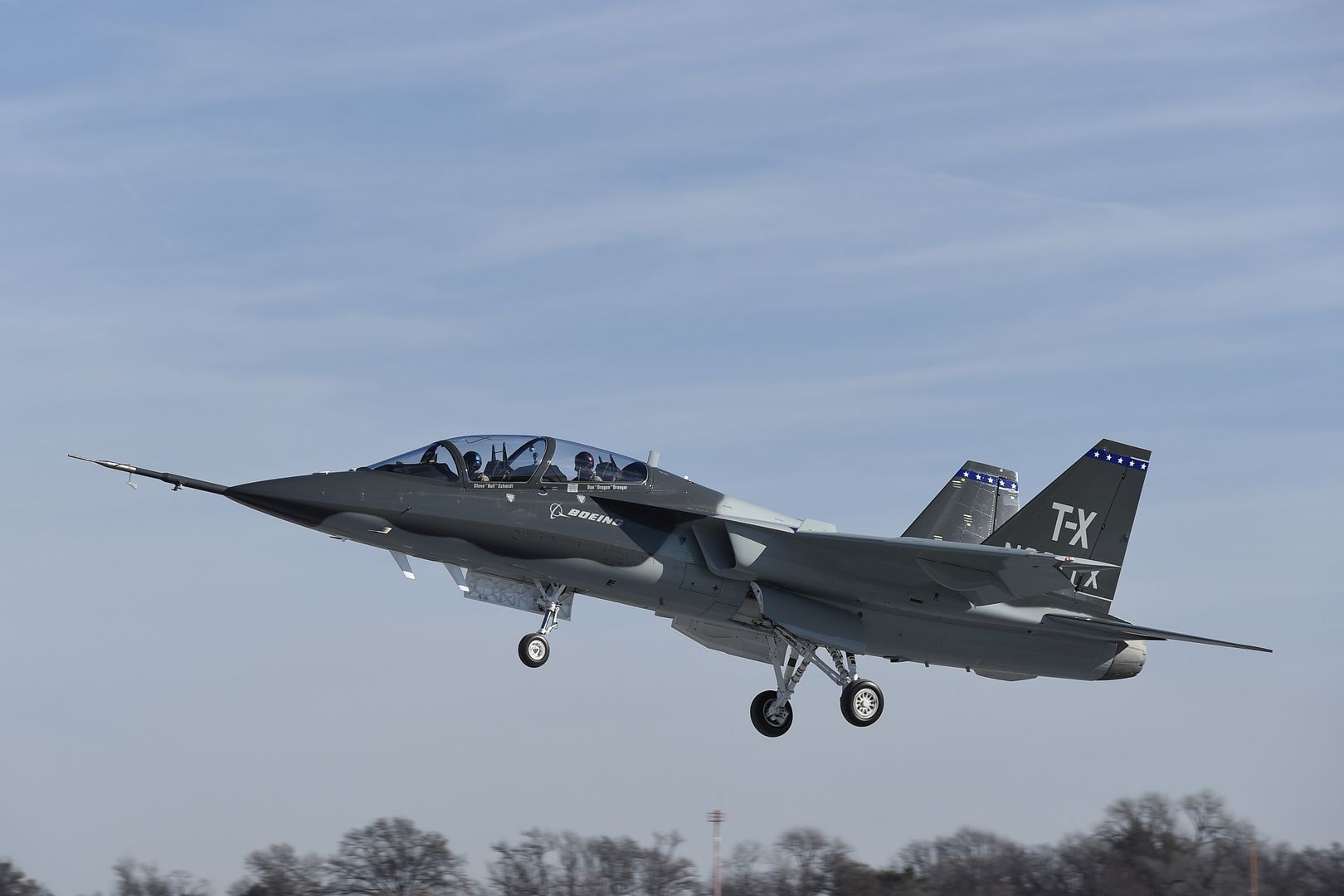
December 20, 2016 Toronto Commercial Aircraft, Press Release
Bombardier Commercial Aircraft announced today that it has delivered the first of three Q400 turboprops ordered by Irish leasing company Elix Aviation Capital Limited (?Elix?). The aircraft, which was delivered in a 78-seat configuration, is scheduled to enter service with Hawaii Island Air, Inc. (?Island Air?) in early 2017. Island Air is Hawaii?s alternative regional airline and second oldest carrier.
?We are delighted to welcome Island Air to the growing family of Q400 aircraft operators and are proud that the airline selected the Q400 as it re-fleets and looks to enhance inter-island connectivity,? said Fred Cromer, President, Bombardier Commercial Aircraft. ?The technologically advanced, environmentally friendly Q400 aircraft is ideal for operations in Hawaii?s hot, humid, topographically diverse landscape and will serve Island Air well as it strives to achieve its business objectives.?
?As we look to expand our regional route network and connect local residents and visitors across the islands, the reliable, operationally flexible and cost efficient Q400 turboprop is the perfect choice to take our airline to the next level,? said David Uchiyama,? Chief Executive Officer and President, Hawaii Island Air. ?Additionally, the comprehensive support from Bombardier in acquiring the aircraft and integrating them into our network reconfirms our decision to utilize this manufacturer and superior product for our fleet renewal and expansion strategy.?
"The modern Q400 turboprop is a valuable asset in our portfolio because it is ideally suited to meet the needs of diverse regional airlines worldwide," said Antonis Simigdalas, Chief Executive Officer, Elix Aviation Capital Limited. ?This latest aircraft acquisition will figure prominently in our plans as we continue to grow and we are pleased to see that the Island Air network will also benefit from this transaction.?
The Q400 aircraft features advanced noise reduction and vibration suppression systems to allow passengers to enjoy a quieter, smother cabin experience. The aircraft burns 30 percent less fuel and produces lower emissions on short-haul routes, making it more environmentally friendly compared to other aircraft currently serving the Hawaii market. In addition, with its reduced noise footprint there will be less disruption to communities as it soars above.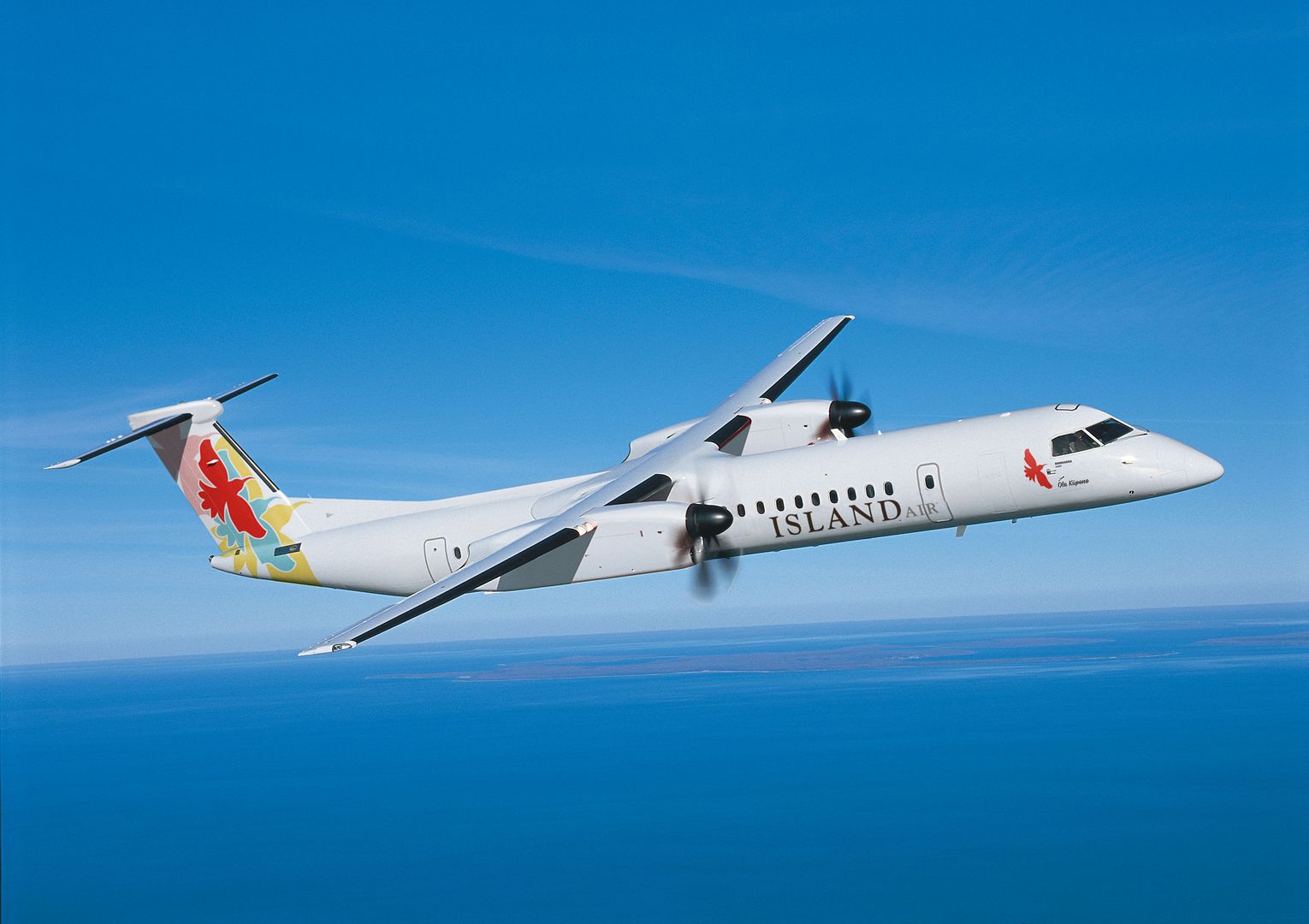
-
 Main AdminMembers of the 179th Airlift Wing Maintenance Group must heat the four turbo prop engines of the C-130H Hercules in the cold early morning at the 179th Airlift Wing, Mansfield, Ohio, as part of normal training operations, Dec. 21, 2016. The 179th AIrlift Wing is always on a mission to be the first choice to respond to state and federal missions with a trusted team of Airmen. (U.S. Air National Guard photo's by Tech. Sgt. Joe Harwood\Released
Main AdminMembers of the 179th Airlift Wing Maintenance Group must heat the four turbo prop engines of the C-130H Hercules in the cold early morning at the 179th Airlift Wing, Mansfield, Ohio, as part of normal training operations, Dec. 21, 2016. The 179th AIrlift Wing is always on a mission to be the first choice to respond to state and federal missions with a trusted team of Airmen. (U.S. Air National Guard photo's by Tech. Sgt. Joe Harwood\Released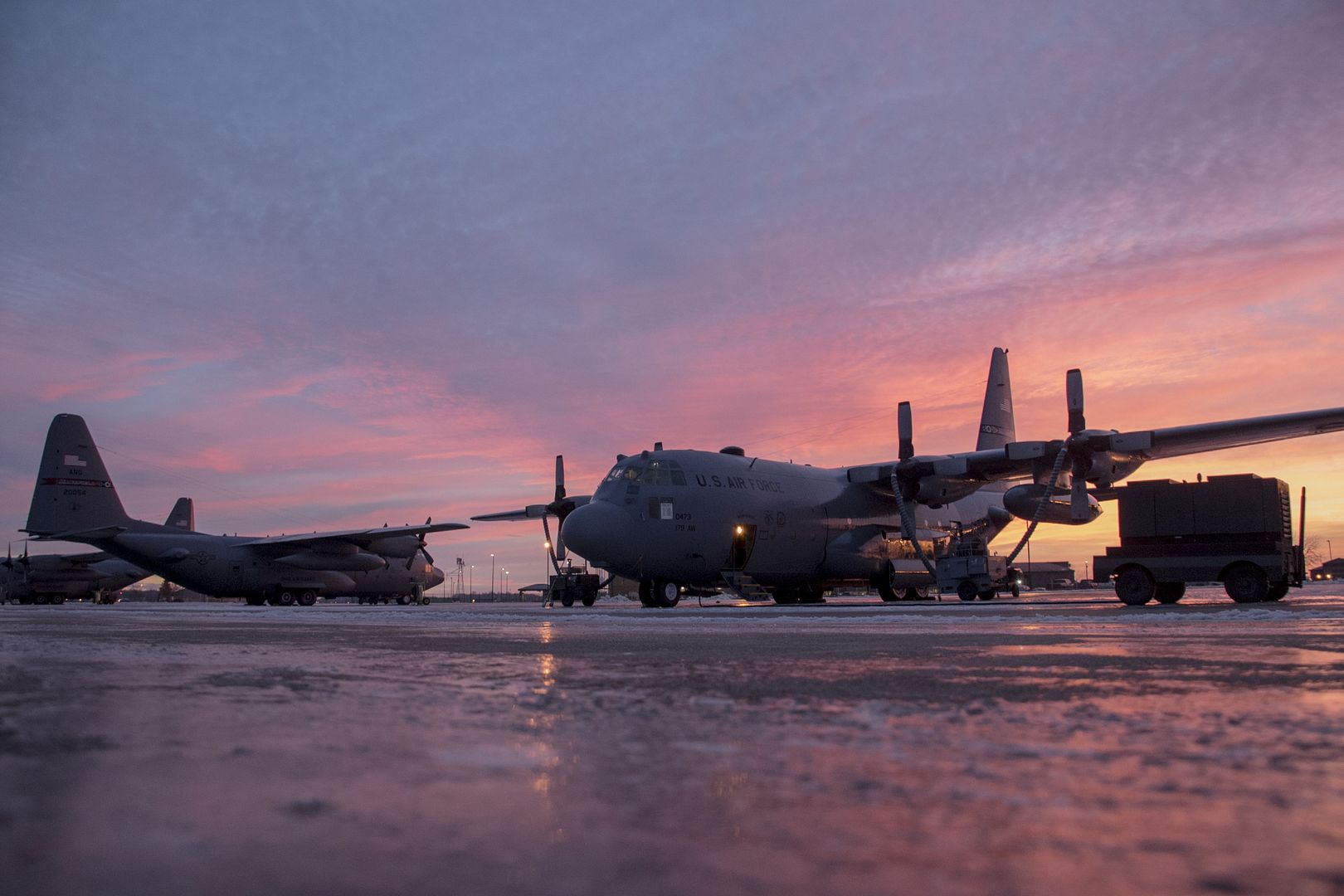

21 December 2016 Press Release
The Lufthansa Group, Airbus? largest airline customer and operator, has taken delivery of its first A350 XWB, the world?s newest and most efficient twin engine widebody airliner. The aircraft is the first of 25 A350-900s that Lufthansa has on order. Lufthansa will deploy their first A350s on long-haul routes from Munich to Delhi and Munich to Boston.
Powered by Rolls-Royce engines, Lufthansa?s A350 XWB will feature a comfortable three-class cabin layout with 48 seats in Business, 21 seats in Premium Economy and 224 seats in Economy. The A350 XWB is equipped with Lufthansa?s latest cabin products including new seats, an all-new inflight entertainment experience and, for the first time, inflight connectivity, offering new levels of comfort and convenience to Lufthansa?s passengers in all classes.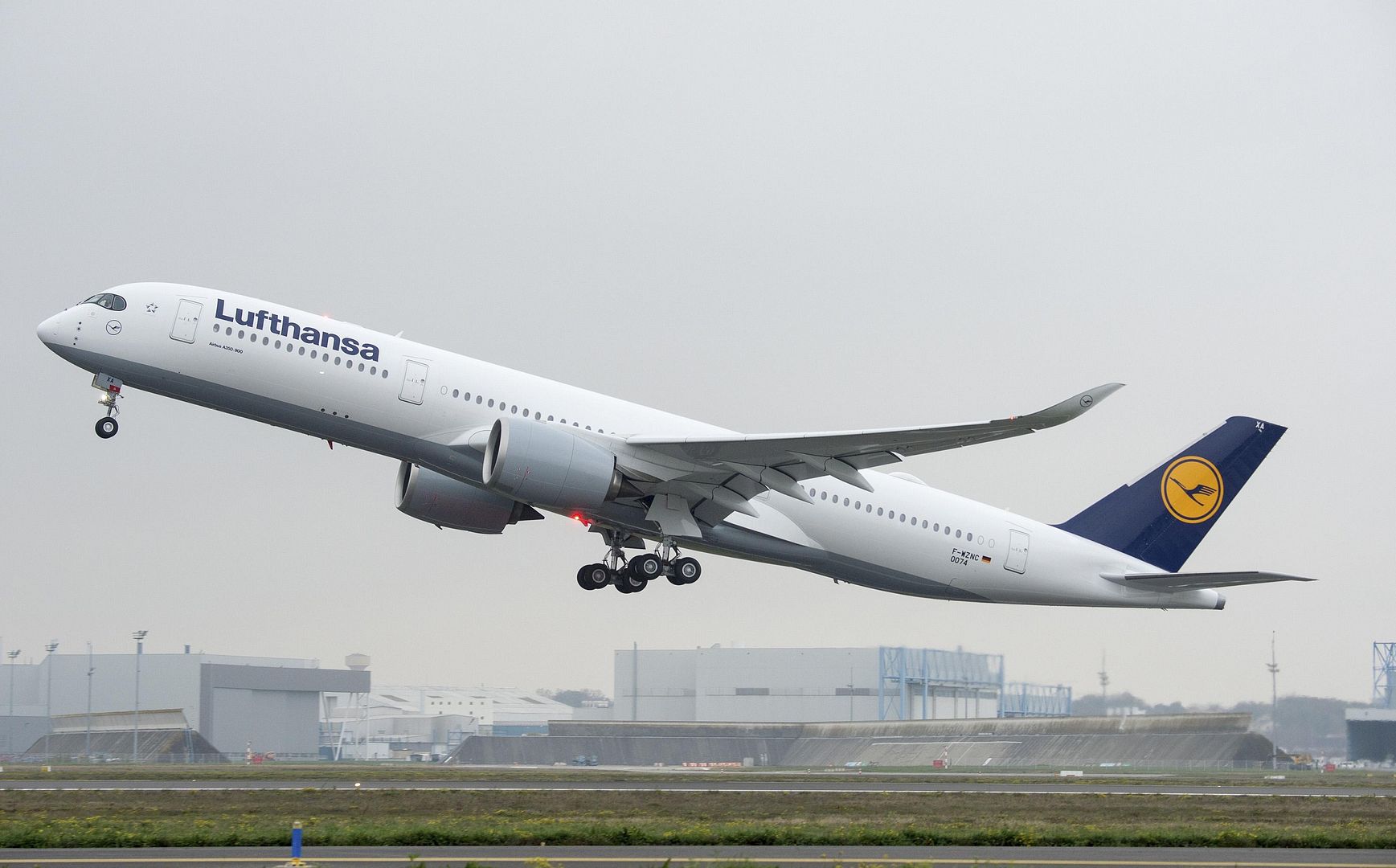
The A350 XWB features the latest aerodynamic design, carbon fibre fuselage and wings, plus new fuel-efficient Rolls-Royce engines. Together, these latest technologies translate into unrivalled levels of operational efficiency, with a 25 per cent reduction in fuel burn and emissions, and significantly lower maintenance costs. The spaciousness, quietness, beautiful interior and mood lighting in the cabin contribute to superior levels of comfort and well-being, setting new standards in terms of flight experience for all passengers.
To date, Airbus has recorded a total of 810 firm orders for the A350 XWB from 43 customers worldwide, already making it one of the most successful widebody aircraft ever.
-
 Main AdminWICHITA, Kan. (Dec. 22, 2016) ? Textron AirLand, LLC, a Textron Inc. (NYSE:TXT) company, today announced the successful maiden flight of the first production conforming Scorpion jet. This program milestone closely follows the recent successful weapons capability exercise on the prototype Scorpion completed in early October. The Scorpion jet is a bold new direction for tactical aircraft designed to excel in roles ranging from intelligence, surveillance and reconnaissance to close air support and armed reconnaissance.
Main AdminWICHITA, Kan. (Dec. 22, 2016) ? Textron AirLand, LLC, a Textron Inc. (NYSE:TXT) company, today announced the successful maiden flight of the first production conforming Scorpion jet. This program milestone closely follows the recent successful weapons capability exercise on the prototype Scorpion completed in early October. The Scorpion jet is a bold new direction for tactical aircraft designed to excel in roles ranging from intelligence, surveillance and reconnaissance to close air support and armed reconnaissance.
The aircraft took off from McConnell Air Force Base in Wichita and conducted a range of maneuvers during the one hour and 42 minute flight. The multi-mission, twin-engine jet performed extremely well and was piloted by experimental test pilots Don Parker and Dave Sitz, who verified the avionics and aerodynamic performance as well as a number of aircraft systems.
The latest version of the Scorpion incorporates a number of improvements based on target customer feedback as well as results from the extensive flight test program. The program has accumulated more than 800 flight hours in both test and real-world operational settings.
The company also announced Garmin as the avionics provider for the enhanced Scorpion. This avionics platform is based on the advanced G3000 integrated flight deck and is optimized for rigorous military operations. The newly configured G3000 avionics system features a large, high-definition display complemented by two high-definition touch-screen controllers and provides more mission capability in the forward cockpit position, additional navigation capability in the rear cockpit position and overall weight savings for improved performance as a multi-mission aircraft. In addition to the new avionics, changes to the airframe include four degrees of sweep to the wings, an enhanced aft horizontal stabilizer for improved high-speed performance, a simplified landing gear design, a next-generation Heads Up Display (HUD) and hands-on throttle and stick (HOTAS) controls.
The first production conforming Scorpion will start a robust flight test program, working closely with the United States Air Force on the first of its kind airworthiness assessment of a Non-DoD military aircraft design.
MEDITERRANEAN SEA (Dec. 21, 2016) An F/A-18F Super Hornet assigned to the Fighting Swordsmen of Strike Fighter Squadron (VFA) 32 launches from the flight deck of the aircraft carrier USS Dwight D. Eisenhower (CVN 69) (Ike). Ike, currently deployed as part of the Eisenhower Carrier Strike Group, is conducting naval operations in the U.S. 6th Fleet area of operations in support of U.S. national security interests in Europe. (U.S. Navy photo by Petty Officer 1st Class Rafael Martie)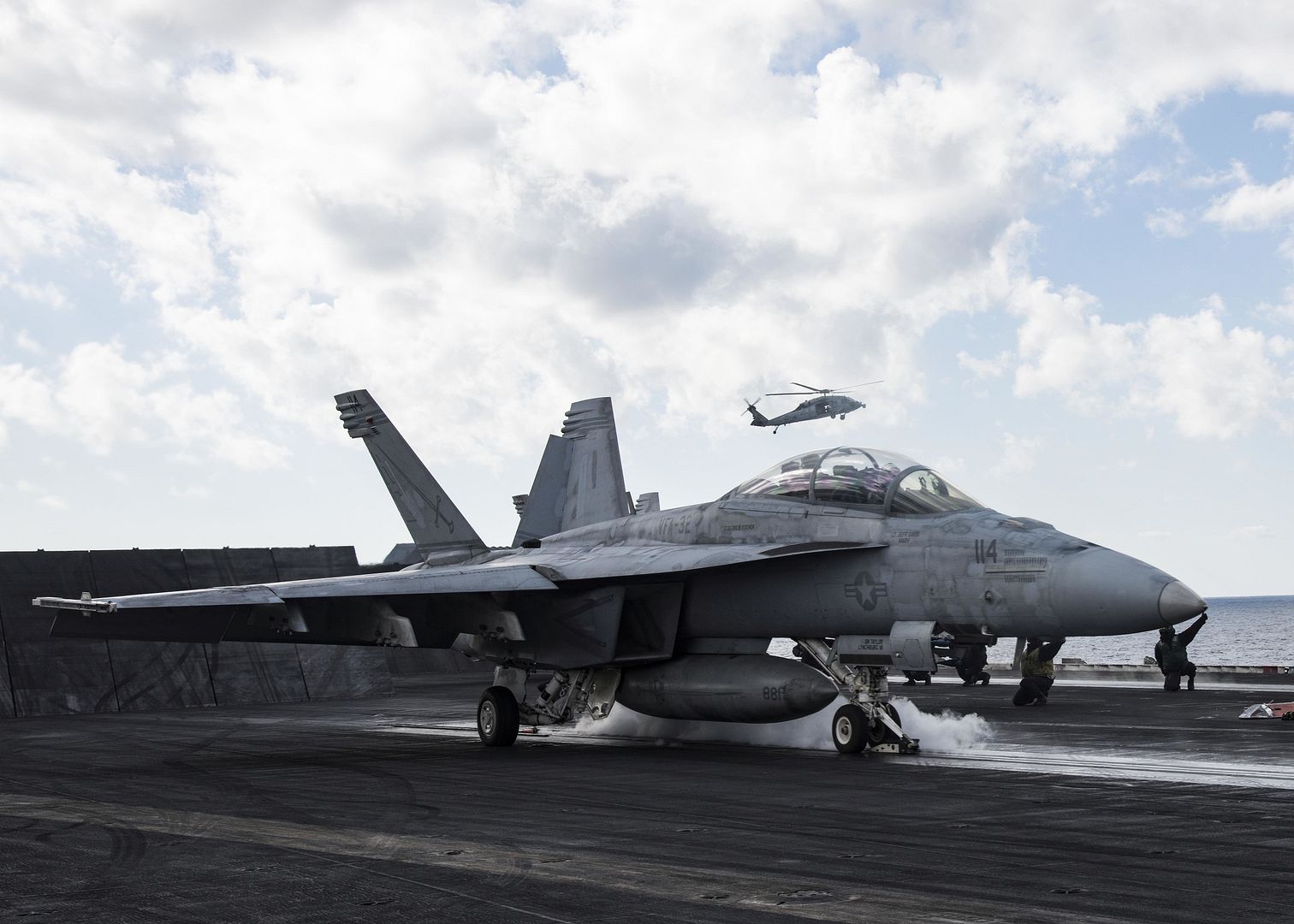
MEDITERRANEAN SEA (Dec. 21, 2016) An EA-18G Growler assigned to the Zappers of Electronic Attack Squadron (VAQ) 130 prepares to make an arrested landing on the flight deck of the aircraft carrier USS Dwight D. Eisenhower (CVN 69). Dwight D. Eisenhower, deployed as part of the Eisenhower Carrier Strike Group, is conducting naval operations in the U.S. 6th Fleet area of operations in support of U.S. national security interests in Europe. (U.S. Navy photo by Mass Communication Specialist 3rd Class Nathan T. Beard/Released)
SAN DIEGO (Dec. 21 2016) A training jet is secured to the fight deck of the aircraft carrier USS Theodore Roosevelt (CVN 71). Theodore Roosevelt is currently conducting exercises in the U.S. 3rd Fleet area of operations at the conclusion of its six month Planned Incremental Availability. (U.S. Navy photo by Seaman Bill M. Sanders/Released)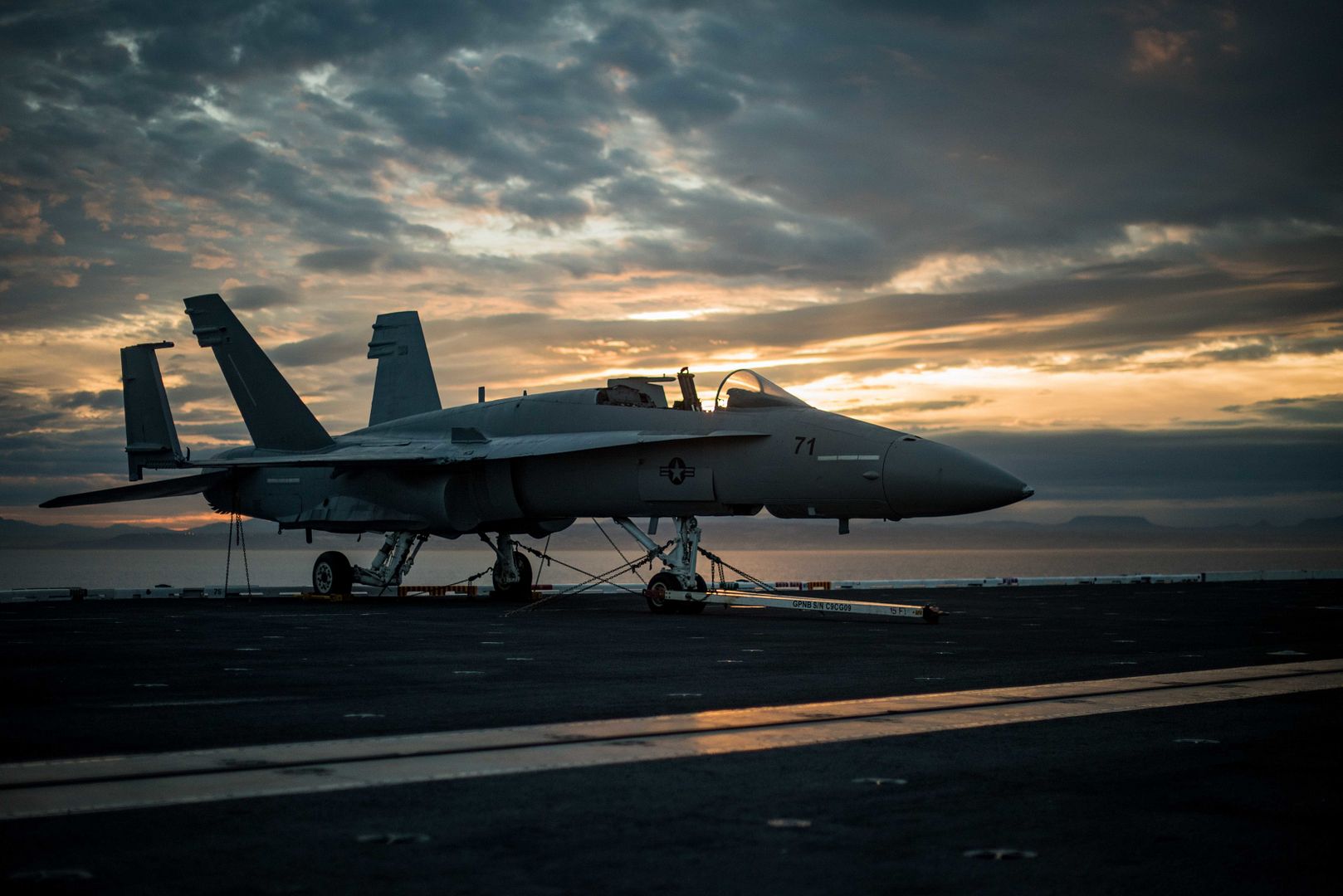
HAMPTON BAYS, NY - Airmen with 101st Rescue Squadron and 103rd Rescue Squadron conduct hoist training with United States Coastguardsmen from US Coast Guard Station Shinnecock December 22, 2016.
During this training, Guardian Angels from the 103rd RQS were lowered via hoist from an HH-60 Pavehawk onto the cutter's deck. After that, the aircraft practiced dropping and removing patient litters, before hoisting the Guardian Angels back up and returning to base.
(US Air National Guard / Staff Sergeant Christopher S. Muncy / released)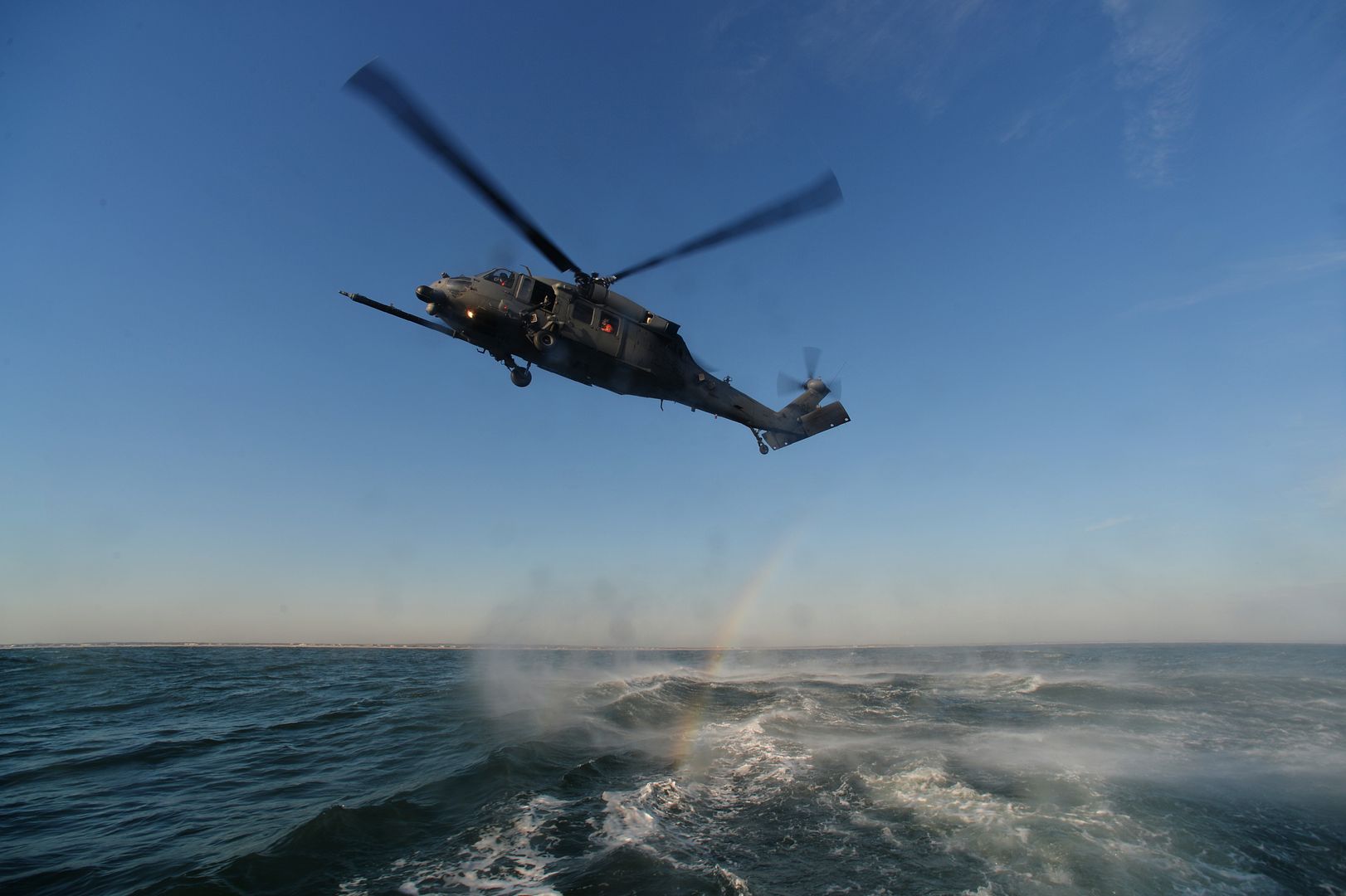
SOUTHWEST ASIA (AFNS) -- When the 134th Expeditionary Fighter Squadron arrived at the 407th Air Expeditionary Group in early December, few people outside the two units would have expected them to generate combat airpower 15 hours after landing.
But that is exactly what the Airmen in Southwest Asia did.
?Typically it will take at least 48 hours to start running aircraft through and provide combat effective aircraft, but the nation called and asked us to produce those aircraft in a much shorter time frame,? said Lt. Col. Brian Lepine, the 407th Expeditionary Maintenance Squadron commander.
For Airmen already stationed at the 407th AEG, this was validation of the beddown capabilities they had worked hard to fine tune throughout their deployment.
?The whole time we have advertised that we can accept aircraft and generate combat airpower within 24 hours,? said Maj. John Green, the 407th Expeditionary Operations Support Squadron commander. ?We?ve always said, ?we are going to set you up for success and you are going to be ready to rock when you hit the ground,? and that is what we?ve done.?
Having aircraft and personnel ready to fly combat missions in support of Operation Inherent Resolve less than a day after arrival is a more complicated task than it may seem on the surface.
One major challenge presented to the unit was the phased cycles of maintenance required by the F-16 Fighting Falcons. In addition to other incremental maintenance, these jets require an extremely detailed inspection after every 300 hours of flight. It is critical that aircraft deployed here hit that mark at staggered intervals to keep a healthy squadron in the fight.
?They are going to look at every nook and cranny and make sure that there is not chafing of the wires and look at areas that we don?t typically look at post- and pre-flight,? Lepine said. ?Typically for a guard unit, that will be every year and a half. We are going to do every aircraft in the time we are here at least once on that phase line.?
Knowing the F-16 would be flying so many more hours than usual, the unit did not want to bring jets that are due for major maintenance overhauls during the deployment. Because of this, an Air National Guard unit ordinarily has about 12 months to prepare for deployment ? the 134th EFS had one month.
To ensure there would be enough capable jets available to meet the high demand for the air-to-ground capabilities the unit is providing, ANG units from across the nation offered to help. In addition to personnel from various units, Alabama, New Jersey and Wisconsin all provided F-16s for the mission.
?Those Airmen out there were doing that heavy maintenance for us as well, so it really was a collection of all of us pulling together,? Lepine said. ?When we called in those resources, they weren?t just polishing canopies. They were making sure that the aircraft were ready to go.?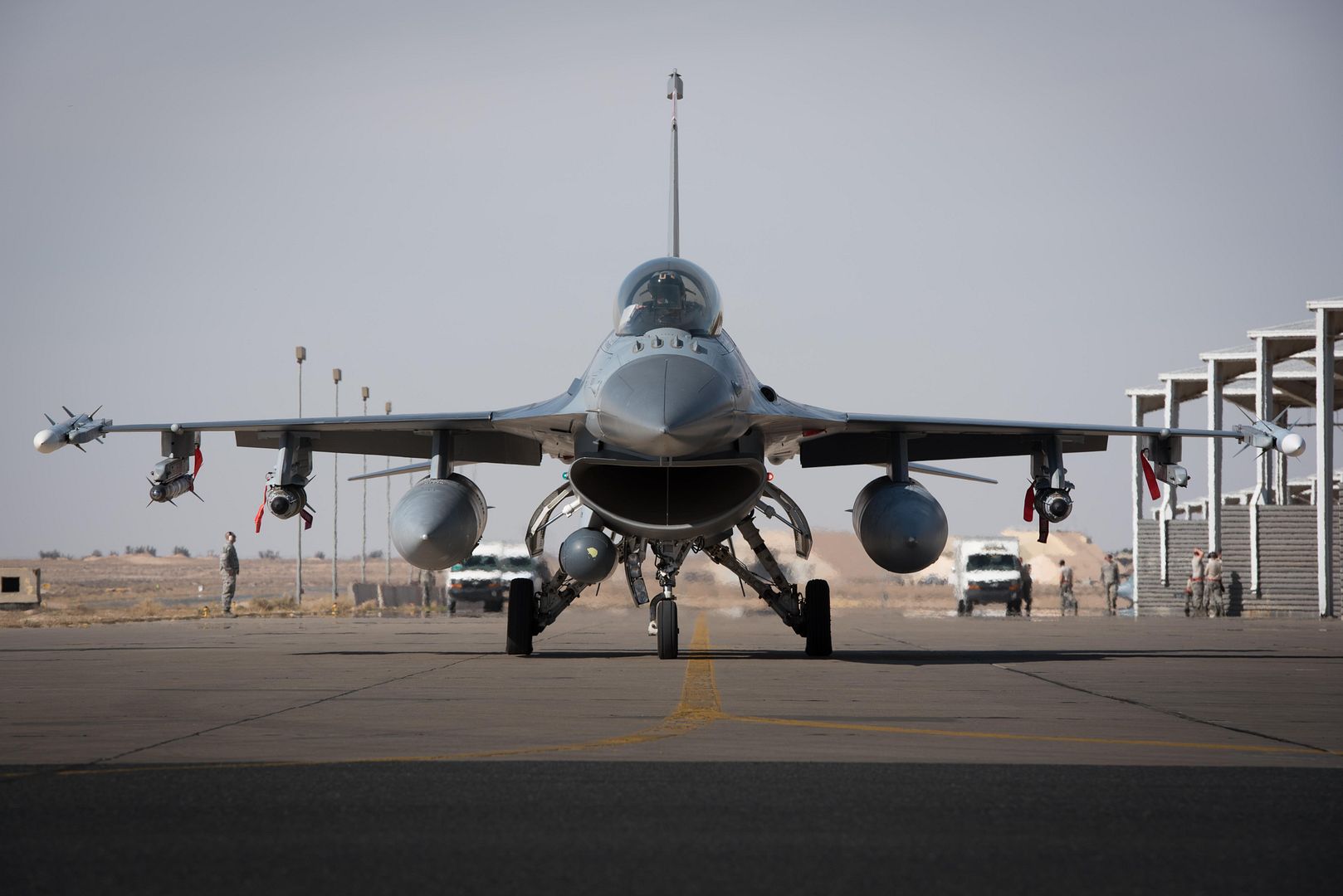
While maintainers were prepping jets at home, the 407th AEG worked with an advanced team of Airmen from the fighter squadron to ensure the base was ready when they arrived. Many of those Airmen are full-time guardsmen who had to quickly leave their civilian lives behind to get here on time.
?Our Airmen had to drop all of what they were doing to do that,? Lepine said. ?They had to go to their civilian employer and say I am not coming to work in about a week.?
But the Airmen encountered few problems in doing so.
?It was very heartwarming to know that the community where we live in the Burlington, (Vermont), area is so in support of us being here,? he said. ?That relieved a lot of the pressures from the Airmen.?
One of the first teams to arrive in theater was the munitions unit.
?We have munitions in place, but we needed a team to get here to build the munitions up,? Green said. ?Those guys showed up and they were fired up and started building bombs.?
During the condensed preparation phase, it was not uncommon to see and Airman working a 15-hour day according to leadership, but it was worth it in the end.
?It was very cool and rewarding to see our teams come together and accomplish the things that we did,? Green said.
EVERETT, Wash., Dec. 22, 2016 ? Boeing [NYSE: BA] this week delivered the 500th 787 Dreamliner, a 787-8 to Avianca, marking another milestone in the program?s history.
?Achieving 500 deliveries ? the fastest to 500 for twin aisles ? is a great accomplishment, made possible by the hard work and dedication of our employees and global suppliers,? said Mark Jenks, vice president and general manager, 787 program, Boeing Commercial Airplanes.
Since entering service in 2011, the 787 Dreamliner fleet has grown to include 48 operators, who have collectively flown 696,000 revenue flights, carrying 133 million passengers over 1.7 billion revenue miles.
The 787 family is flying more than 530 routes, with customers opening more than 120 new nonstop routes around the world.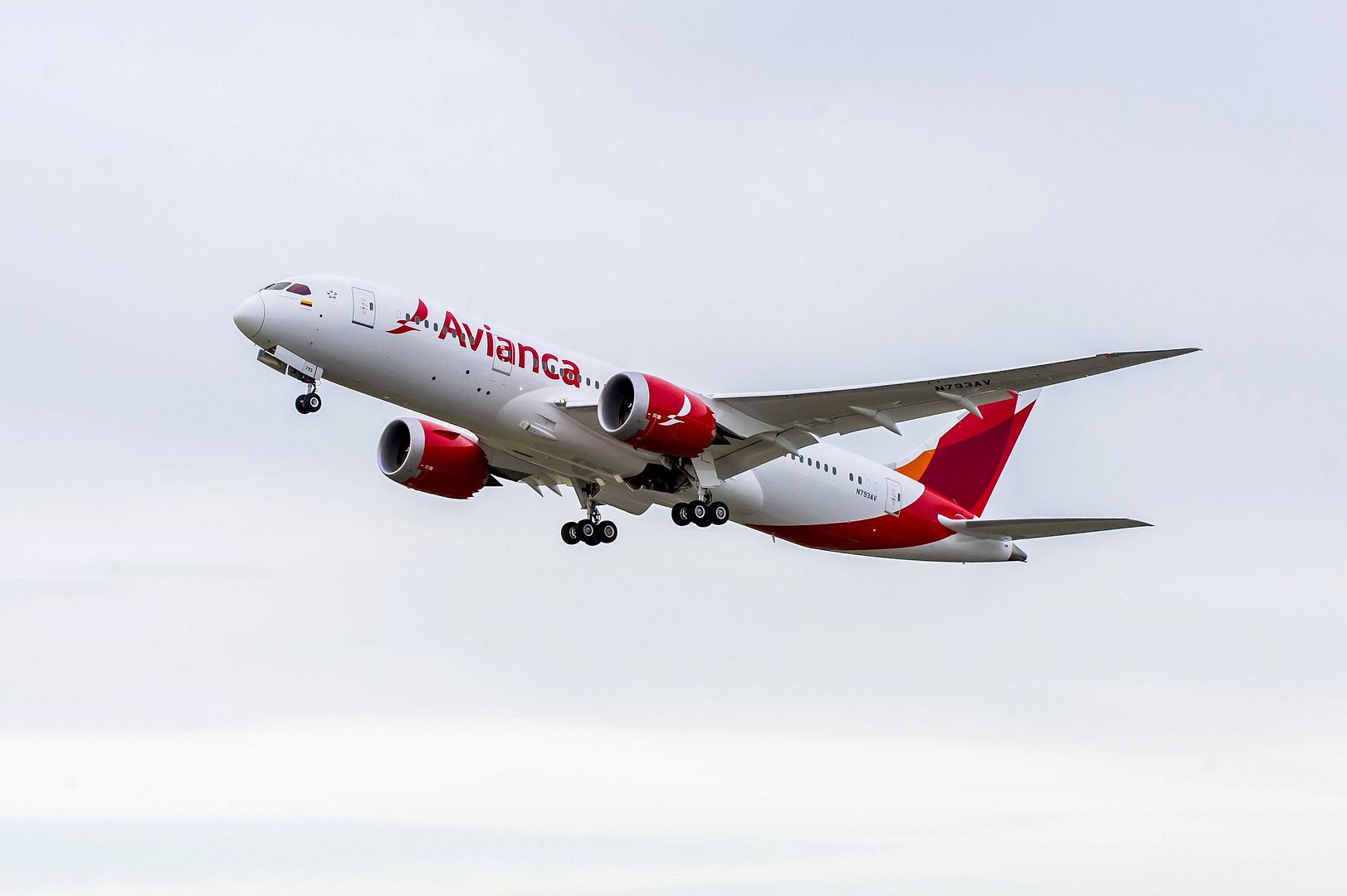
Amsterdam, The Netherlands, December 22nd, 2016 ? Just weeks after receiving the Type Certificates from the Russian authorities for the E170 and E175 jets, Embraer announces that S7 Airlines will be the first operator of the E170 in the country. The airline signed an agreement with GE Capital Aviation Services (GECAS) to lease 17 E170 pre-owned jets, therefore not impacting Embraer?s order backlog. The airline will start to receive the aircraft in the first half of 2017.
?Once again, GECAS joins Embraer to provide aircraft to the Russian market,? said Arjan Meijer, Chief Commercial Officer, Embraer Commercial Aviation. ?We welcome S7 Airlines to the growing E-Jets operators? family. We are delighted to see the E170 in operation with one of the largest Russian Airlines, supporting the airline as it spreads its wings around Russia. S7 is now the carrier with the largest network outside Moscow serving regional and intra-regional markets.?
?New E170s will allow us to gain momentum in the development of regional air transportation. We see this segment as highly potential. Today, air transportation is concentrated in Moscow, and passengers from Ural cities often have to fly to the Far East through a connecting flight in Moscow. The first Embraers will be based at the Novosibirsk Tolmachevo airport which is located well enough to serve as an efficient hub for other regions. The new type of airliners will allow us to launch flights from small and hard to reach cities, where the use of medium-haul aircrafts is impossible,? said Vladimir Obyedkov, CEO of S7 Airlines.
?The introduction of the E170 into the S7 fleet is the result of our thorough analysis of the airline?s growing needs?, said Alec Burger, GECAS President & CEO. ?The E170 offers strong economics and is well-suited to help S7 serve the Russian markets.?
The E-Jets are already well established in several countries in the region? Poland, Finland, and Bulgaria ? and in CIS (Commonwealth of Independent States) countries where Embraer customers operate E-Jets in Kazakhstan, Azerbaijan, Belarus, Ukraine and the Republic of Moldova. The E190 and the E195 were certified by Russia in 2012, and Saratov Airlines has been flying the E195 since 2013.
Embraer is the world?s leading manufacturer of commercial jets with up to 130+ seats. The Company has over 100 customers all over the world operating the ERJ and E-Jet families of aircraft. For the E-Jets program alone, Embraer has logged more than 1,700 orders and over 1,300 deliveries, redefining the traditional concept of regional aircraft by operating across a range of business applications.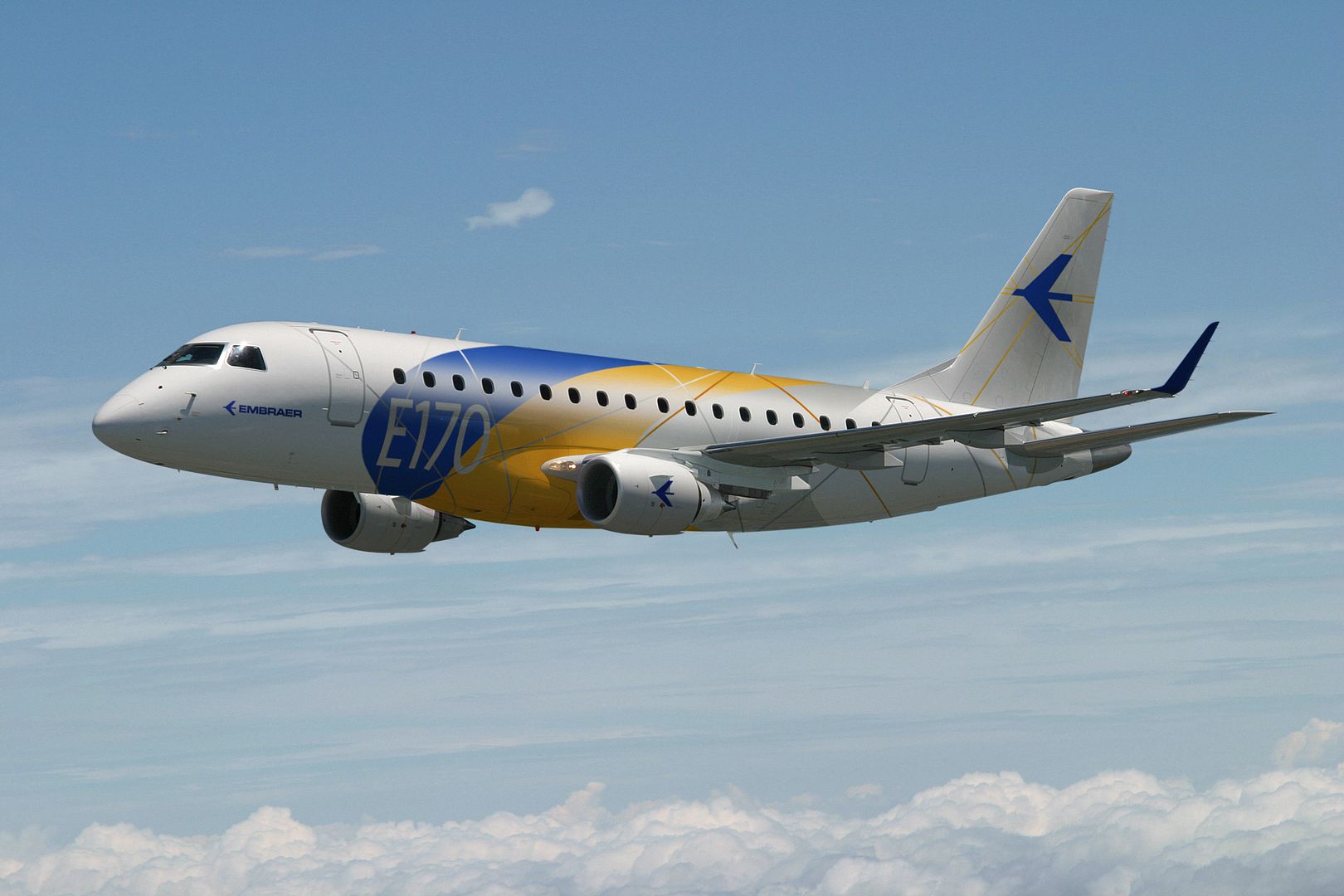
-
7 years agoSat Dec 24 2016, 03:43pm
 Main AdminA U.S. Air Force F-16 Fighting Falcon flies behind a 340th Expeditionary Air Refueling Squadron KC-135 Stratotanker after aerial refueling for an Operation Freedom?s Sentinel mission over Afghanistan, Dec. 21, 2016. The 340th EARS is actively engaged in tactical refueling operations which extend kinetic capabilities across Southwest Asia. (U.S. Air Force photo by Staff Sgt. Matthew B. Fredericks)
Main AdminA U.S. Air Force F-16 Fighting Falcon flies behind a 340th Expeditionary Air Refueling Squadron KC-135 Stratotanker after aerial refueling for an Operation Freedom?s Sentinel mission over Afghanistan, Dec. 21, 2016. The 340th EARS is actively engaged in tactical refueling operations which extend kinetic capabilities across Southwest Asia. (U.S. Air Force photo by Staff Sgt. Matthew B. Fredericks)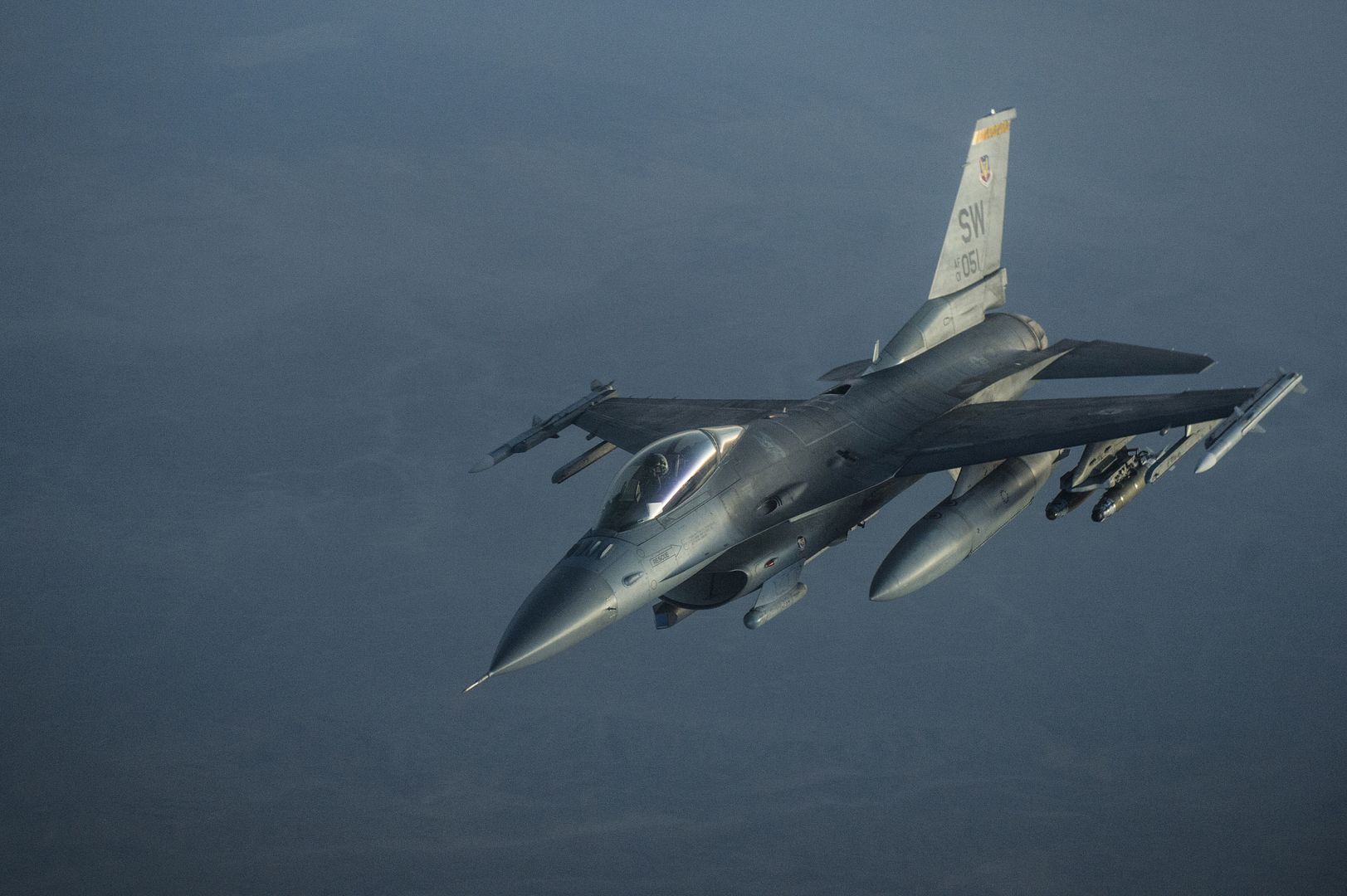
A U.S. Air Force F-16 Fighting Falcon releases flares behind a 340th Expeditionary Air Refueling Squadron KC-135 Stratotanker after aerial refueling for an Operation Freedom?s Sentinel mission over Afghanistan, Dec. 21, 2016. The 340th EARS is actively engaged in tactical refueling operations which extend kinetic capabilities across Southwest Asia. (U.S. Air Force photo by Staff Sgt. Matthew B. Fredericks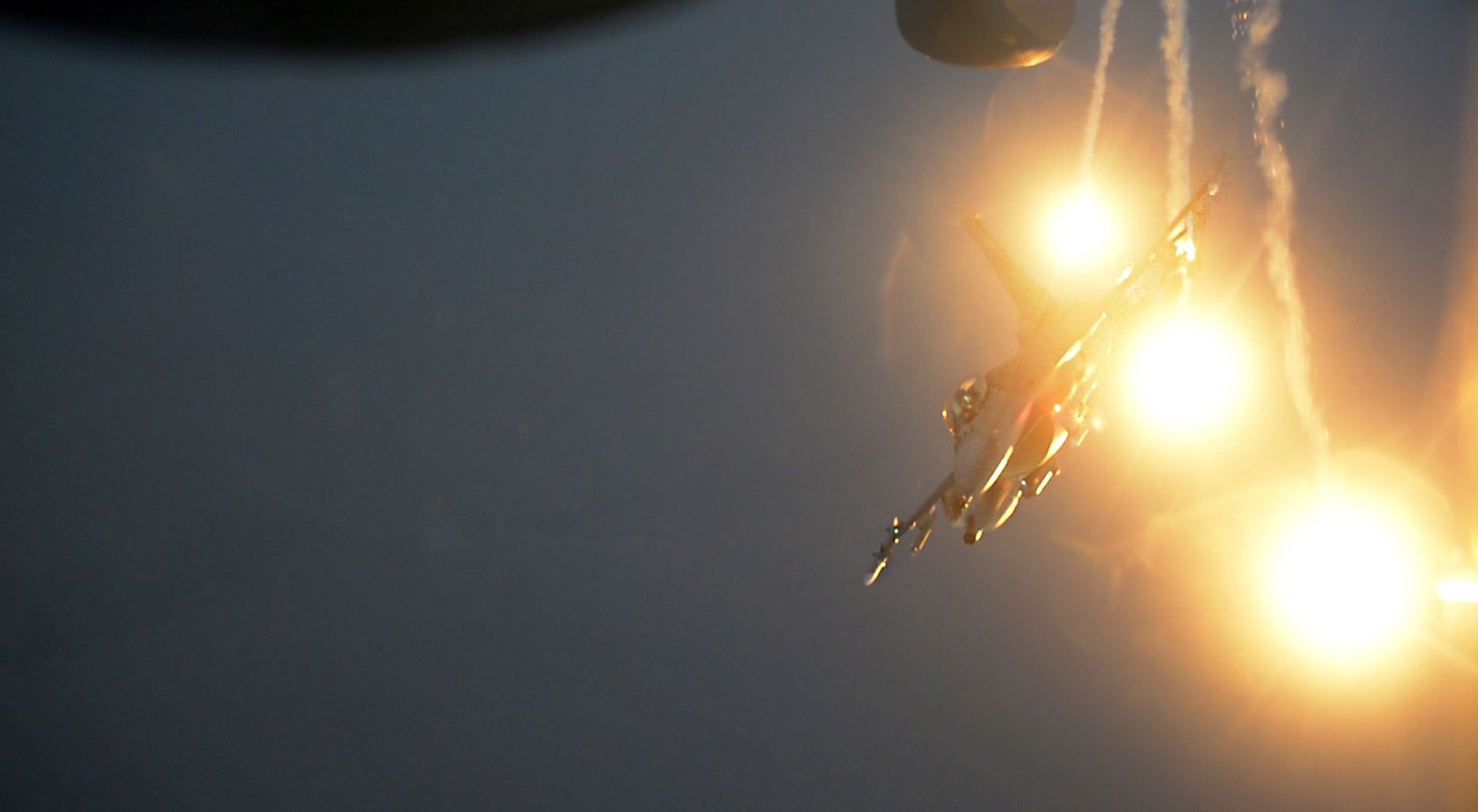
A formation of QF-4 Phantoms fly over hundreds of spectators during the QF-4 Phinal Phlight event Dec. 21, 2016 at Holloman Air Force Base, N.M. The event included an air demonstration, formal retirement ceremony and a "pet-the-jet" expo with static displays of the QF-4 Phantom, QF-16 Fighting Falcon and E-9 ?Widget? to mark the end of the aircraft?s 53 years of service to the Air Force. (U.S. Air Force photo by Master Sgt. Matthew McGovern)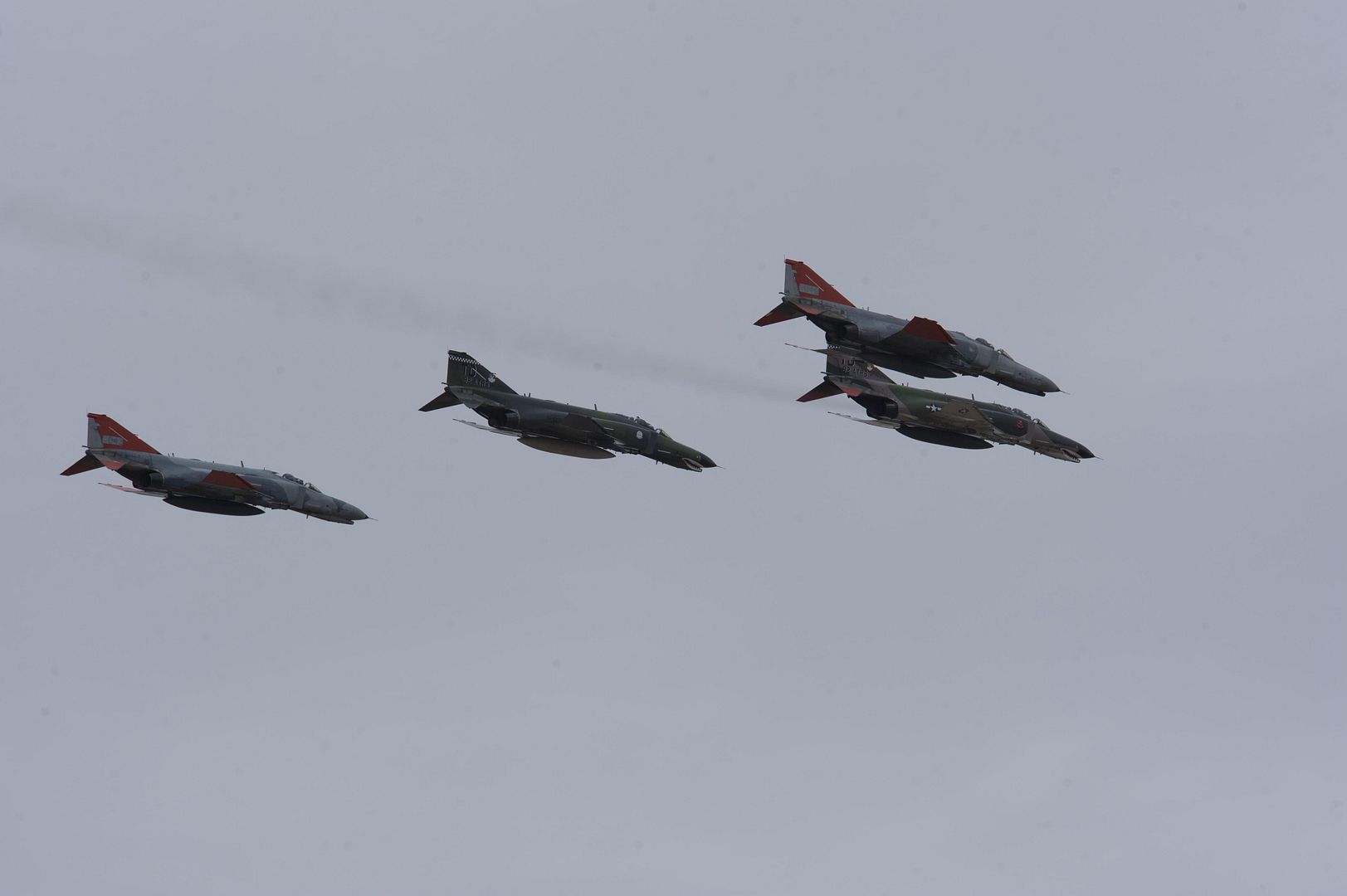
-
 Main AdminAn F-16 Fighting Falcon disconnects from a KC-10 Extender after a successful refueling over Iraq, Dec. 25, 2016. Many pilots wore a traditional red ?Santa? hat while flying on Christmas Day. F-16s are providing precision guided close air support during Combined Joint Task Force-Operation Inherent Resolve, a multinational effort to weaken and destroy Islamic State in Iraq and the Levant operations in the Middle East region and around the world. (U.S. Air Force photo | Senior Airman Tyler Woodward)
Main AdminAn F-16 Fighting Falcon disconnects from a KC-10 Extender after a successful refueling over Iraq, Dec. 25, 2016. Many pilots wore a traditional red ?Santa? hat while flying on Christmas Day. F-16s are providing precision guided close air support during Combined Joint Task Force-Operation Inherent Resolve, a multinational effort to weaken and destroy Islamic State in Iraq and the Levant operations in the Middle East region and around the world. (U.S. Air Force photo | Senior Airman Tyler Woodward)
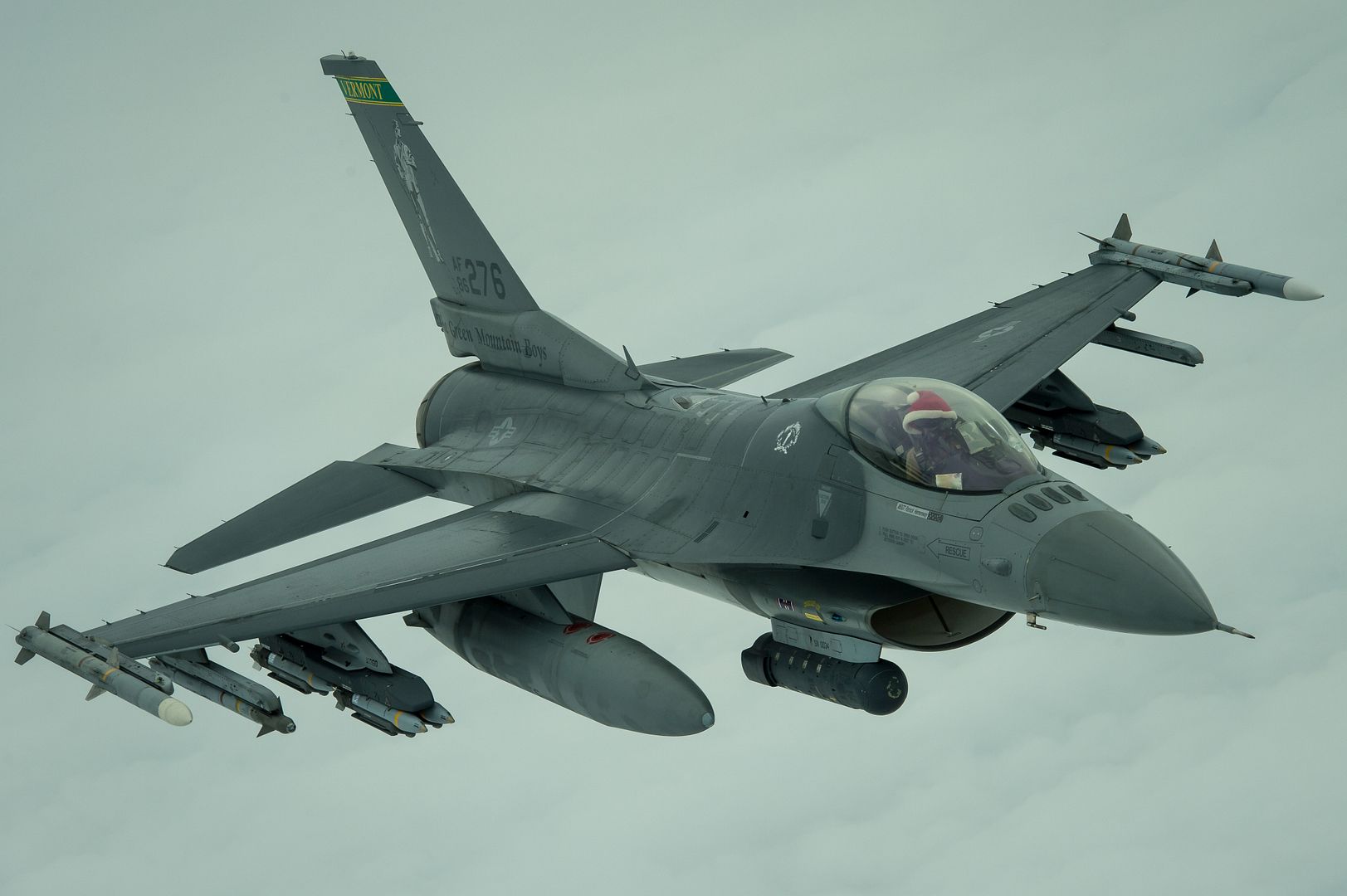
-
 Main AdminAn F-15E Strike Eagle disconnects from a KC-10 Extender after receiving fuel over Iraq, Dec. 25, 2016. F-15s are providing precision guided close air support during Combined Joint Task Force-Operation Inherent Resolve, a multinational effort to weaken and destroy Islamic State in Iraq and the Levant, operations in the Middle East region and around the world. (U.S. Air Force photo/Senior Airman Tyler Woodward)
Main AdminAn F-15E Strike Eagle disconnects from a KC-10 Extender after receiving fuel over Iraq, Dec. 25, 2016. F-15s are providing precision guided close air support during Combined Joint Task Force-Operation Inherent Resolve, a multinational effort to weaken and destroy Islamic State in Iraq and the Levant, operations in the Middle East region and around the world. (U.S. Air Force photo/Senior Airman Tyler Woodward)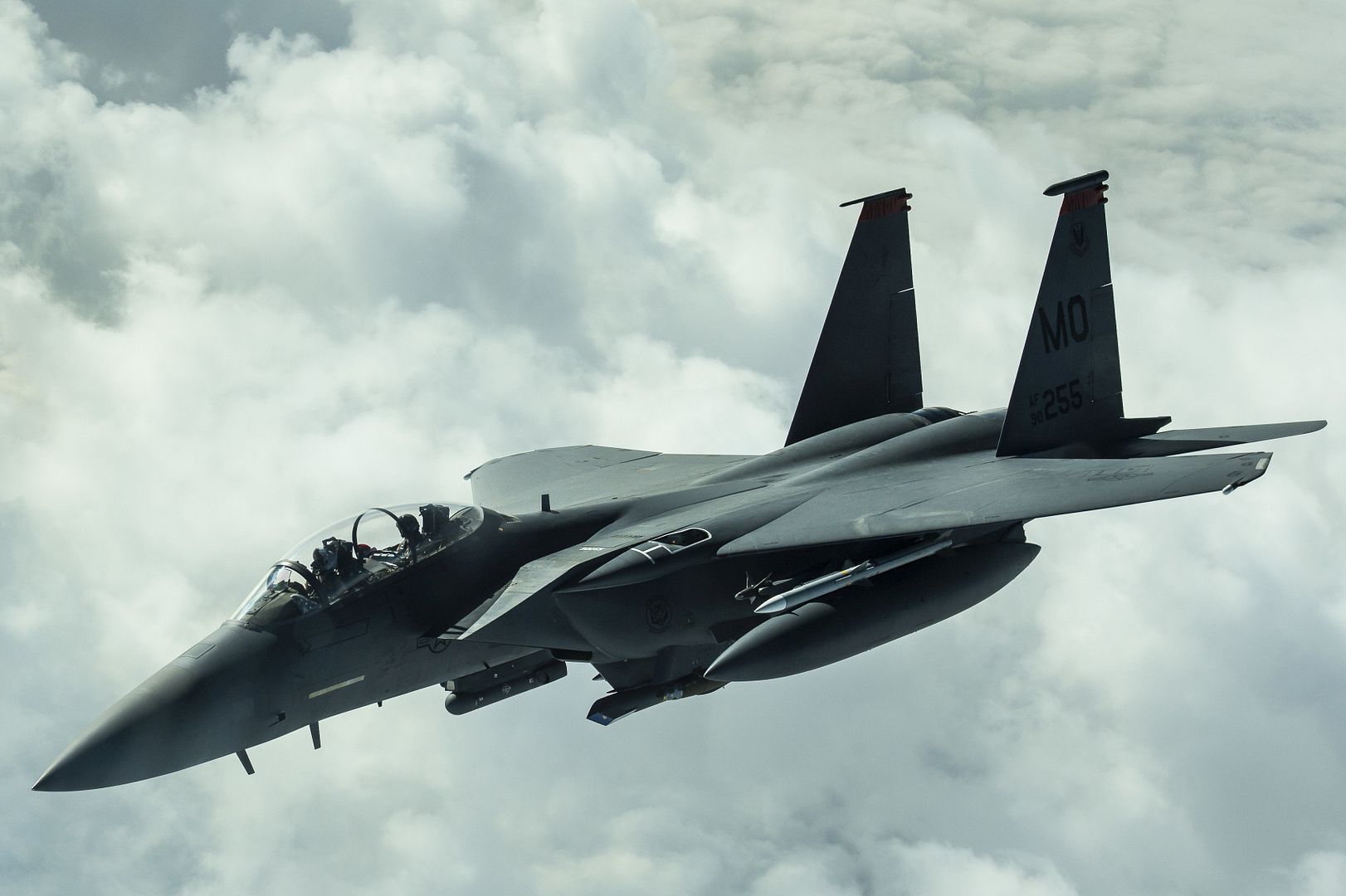
-
 Main AdminStaff Sgt. Larry Runk, 407th Expeditionary Maintenance Squadron crew chief, walks away from an F-16 Fighting Falcon assigned to the 134th Expeditionary Fighter Squadron after marshaling it for take off at the 407th Air Expeditionary Group, Dec. 29, 2016. Combat missions flown by the fighter squadron have degraded military capabilities of Daesh, also known as the Islamic State, by denying the group safe haven in the region. (U.S. Air Force photo/Master Sgt. Benjamin Wilson)(Released)
Main AdminStaff Sgt. Larry Runk, 407th Expeditionary Maintenance Squadron crew chief, walks away from an F-16 Fighting Falcon assigned to the 134th Expeditionary Fighter Squadron after marshaling it for take off at the 407th Air Expeditionary Group, Dec. 29, 2016. Combat missions flown by the fighter squadron have degraded military capabilities of Daesh, also known as the Islamic State, by denying the group safe haven in the region. (U.S. Air Force photo/Master Sgt. Benjamin Wilson)(Released)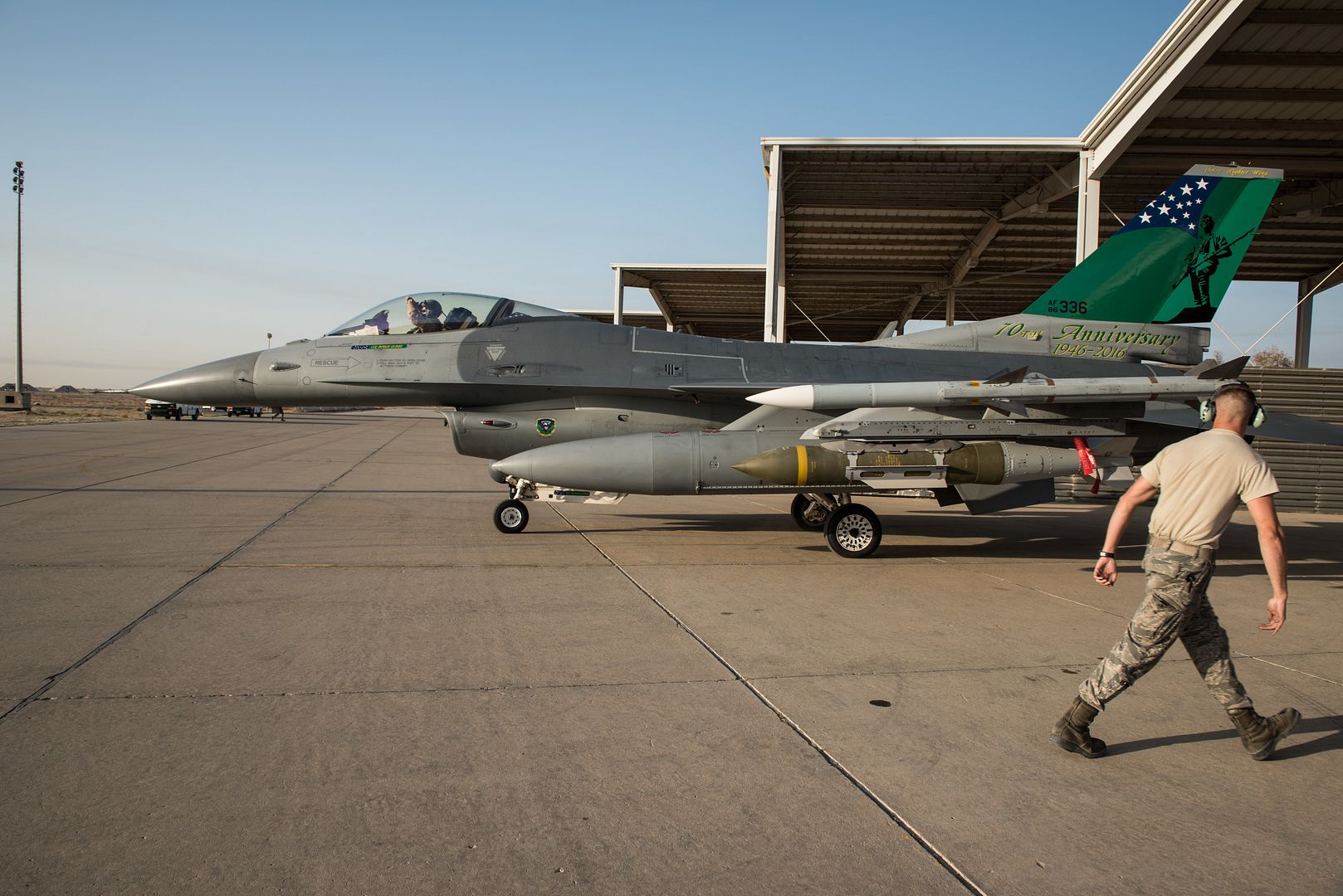
An F-16 Fighting Falcon assigned to the 134th Expeditionary Fighter Squadron takes off at the 407th Air Expeditionary Group, Dec. 29, 2016. The 134th EFS is flying combat missions for Operation Inherent Resolve to support and enable Iraqi Security Forces? efforts with the unique capabilities provided by the fighter squadron. (U.S. Air Force photo/Master Sgt. Benjamin Wilson)(Released)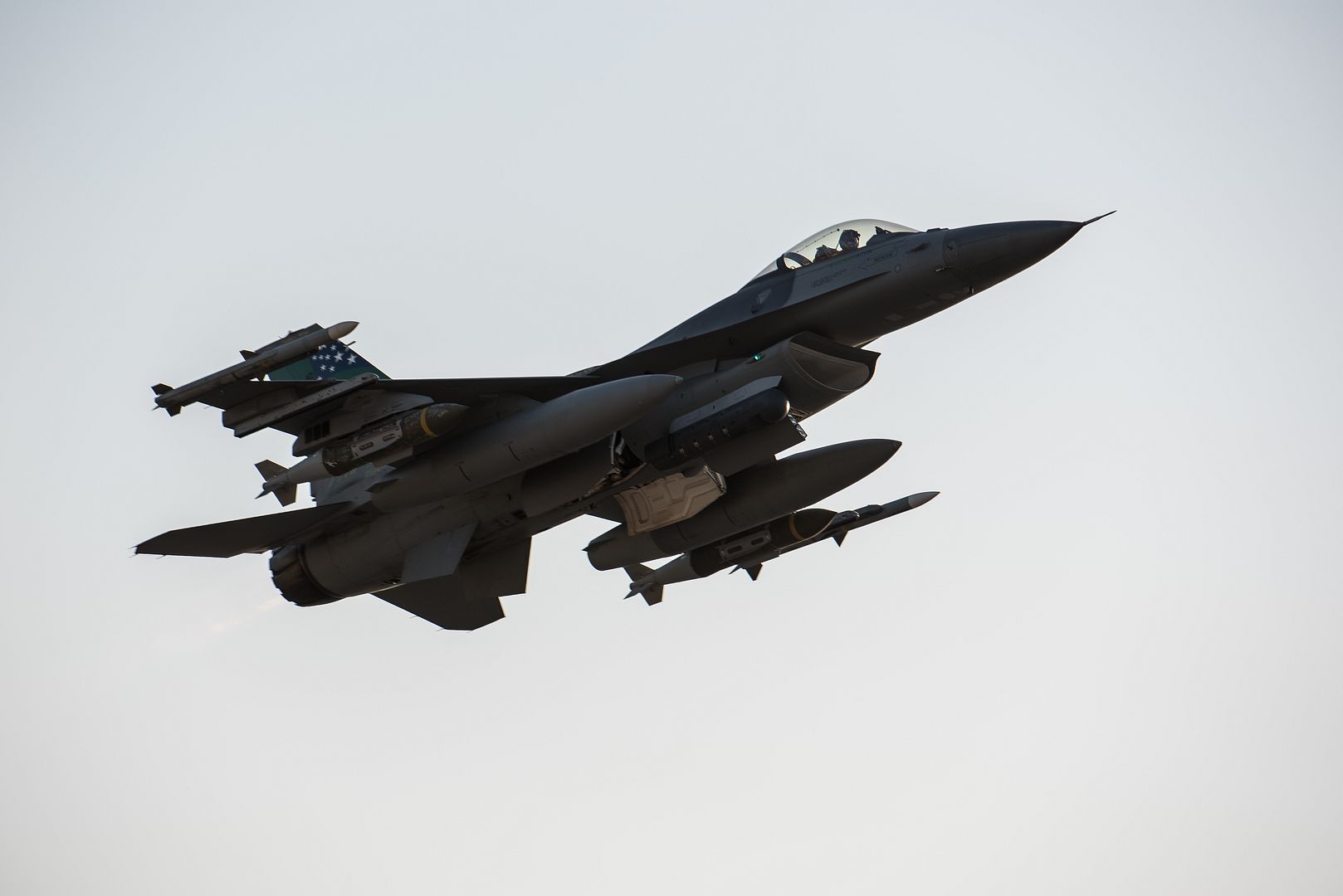
-
 Main AdminGULF OF ADEN (Jan. 1, 2017)
Main AdminGULF OF ADEN (Jan. 1, 2017)
An AV-8B Harrier assigned to the Ridge Runners of Marine Medium Tiltrotor Squadron (VMM) 163 (Reinforced), lands aboard the amphibious assault ship USS Makin Island (LHD . Makin Island is deployed as part of the Makin Island Amphibious Ready group to the U.S. 5th Fleet area of operations in support of maritime security operations and theater security cooperation efforts. U.S. Navy photo by Mass Communication Specialist 3rd Class Devin M. Langer (Released)
. Makin Island is deployed as part of the Makin Island Amphibious Ready group to the U.S. 5th Fleet area of operations in support of maritime security operations and theater security cooperation efforts. U.S. Navy photo by Mass Communication Specialist 3rd Class Devin M. Langer (Released) 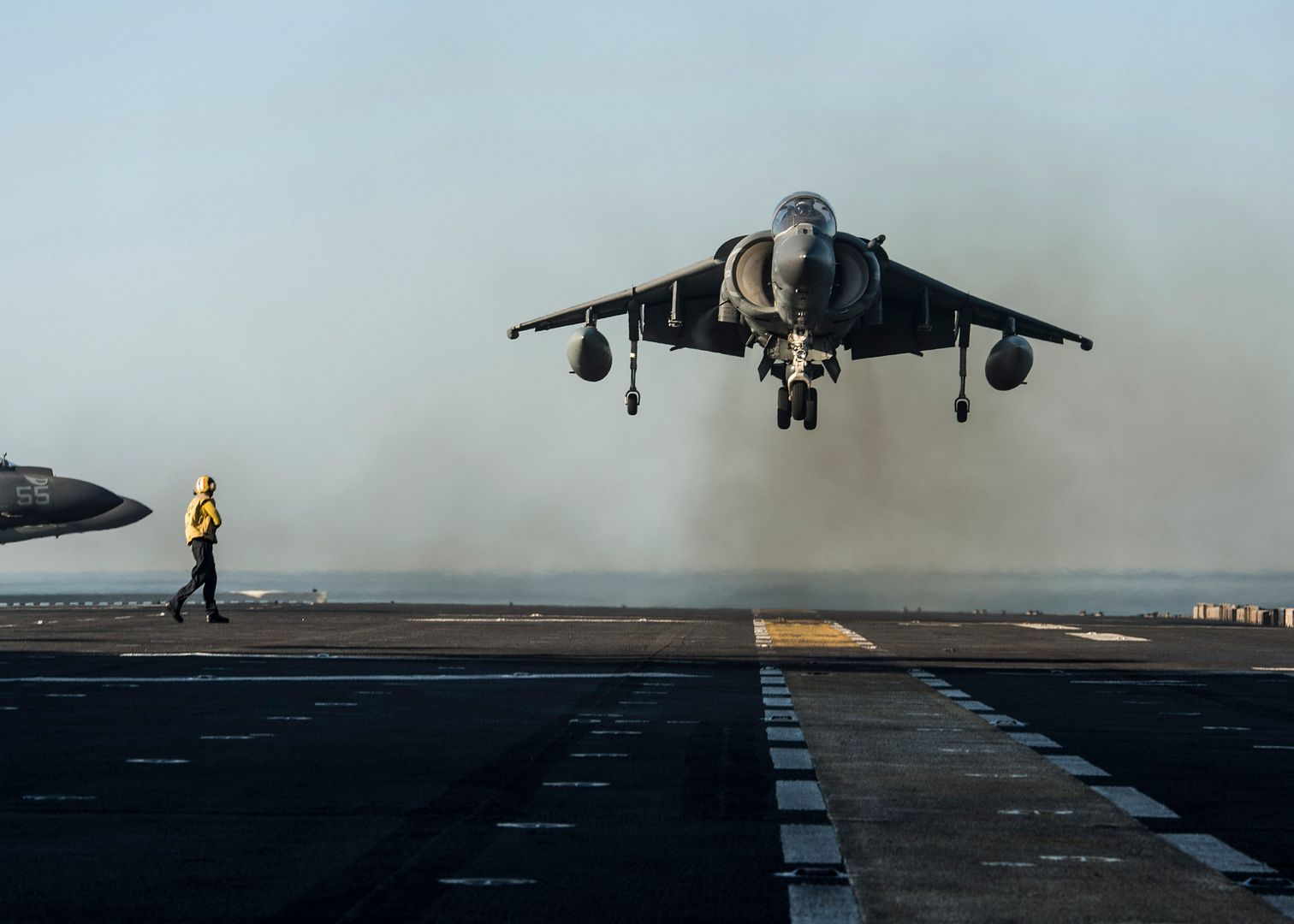
Leonardo: successful first flight for the new Aermacchi M-345
The prototype of the new Aermacchi M-345HET (High Efficiency Trainer) two-seat basic jet trainer has successfully completed its first flight from Venegono Superiore airfield (Varese, Italy) on December 29. The aircraft was flown by Quirino Bucci and Giacomo Iannelli from Leonardo Aircraft Division.
Quirino Bucci, Project Test Pilot Trainers of Leonardo Aircraft Division, expressed great satisfaction at the end of the 30 minute flight and said: ?The aircraft conducted itself perfectly, meeting the expectations of the design parameters while showing excellent performance. The engine in particular demonstrated a great capacity to react to regime changes, which is a fundamental characteristic for a basic training aircraft.?
The M-345 is the latest-generation aircraft from Leonardo for military pilot training and provides global Air Forces with an economically affordable and effective solution, thanks to a significant reduction in acquisition and life-cycle costs compared to those of powerful turboprop trainer aircraft. The test campaign will be completed within 2017. The next tests will check the advanced avionics systems, the engine and the flight envelope expansion, including altitude, speed and manoeuvrability.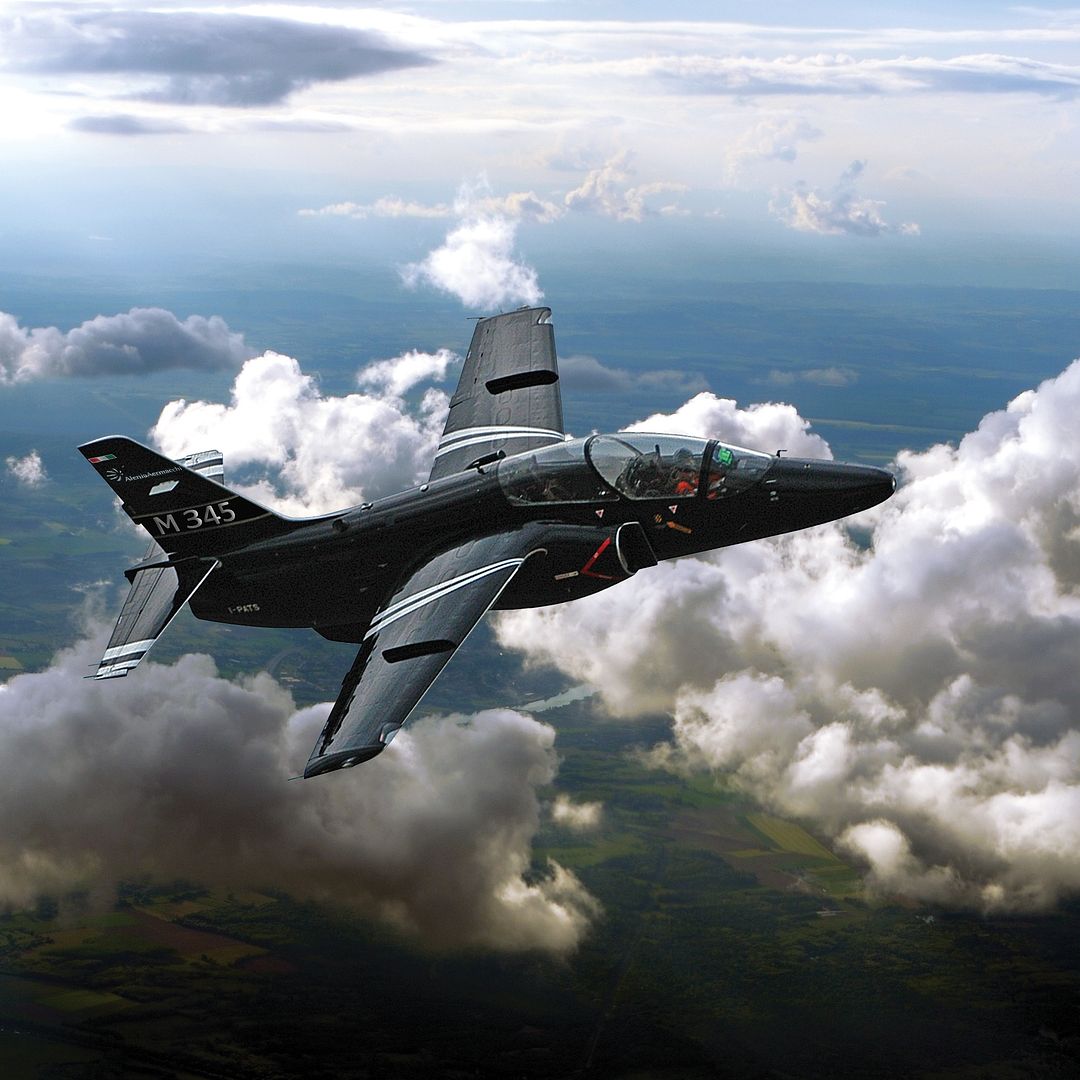
Post a reply
- Go to Next topic
- Go to Welcome
- Go to Introduce Yourself
- Go to General Discussion
- Go to Screenshots, Images and Videos
- Go to Off topic
- Go to Works in Progress
- Go to Skinning Tips / Tutorials
- Go to Skin Requests
- Go to IJAAF Library
- Go to Luftwaffe Library
- Go to RAF Library
- Go to USAAF / USN Library
- Go to Misc Library
- Go to The Ops Room
- Go to Made in Germany
- Go to Campaigns and Missions
- Go to Works in Progress
- Go to Juri's Air-Raid Shelter
- Go to Campaigns and Missions
- Go to Works in Progress
- Go to Skinpacks
- Go to External Projects Discussion
- Go to Books & Resources
